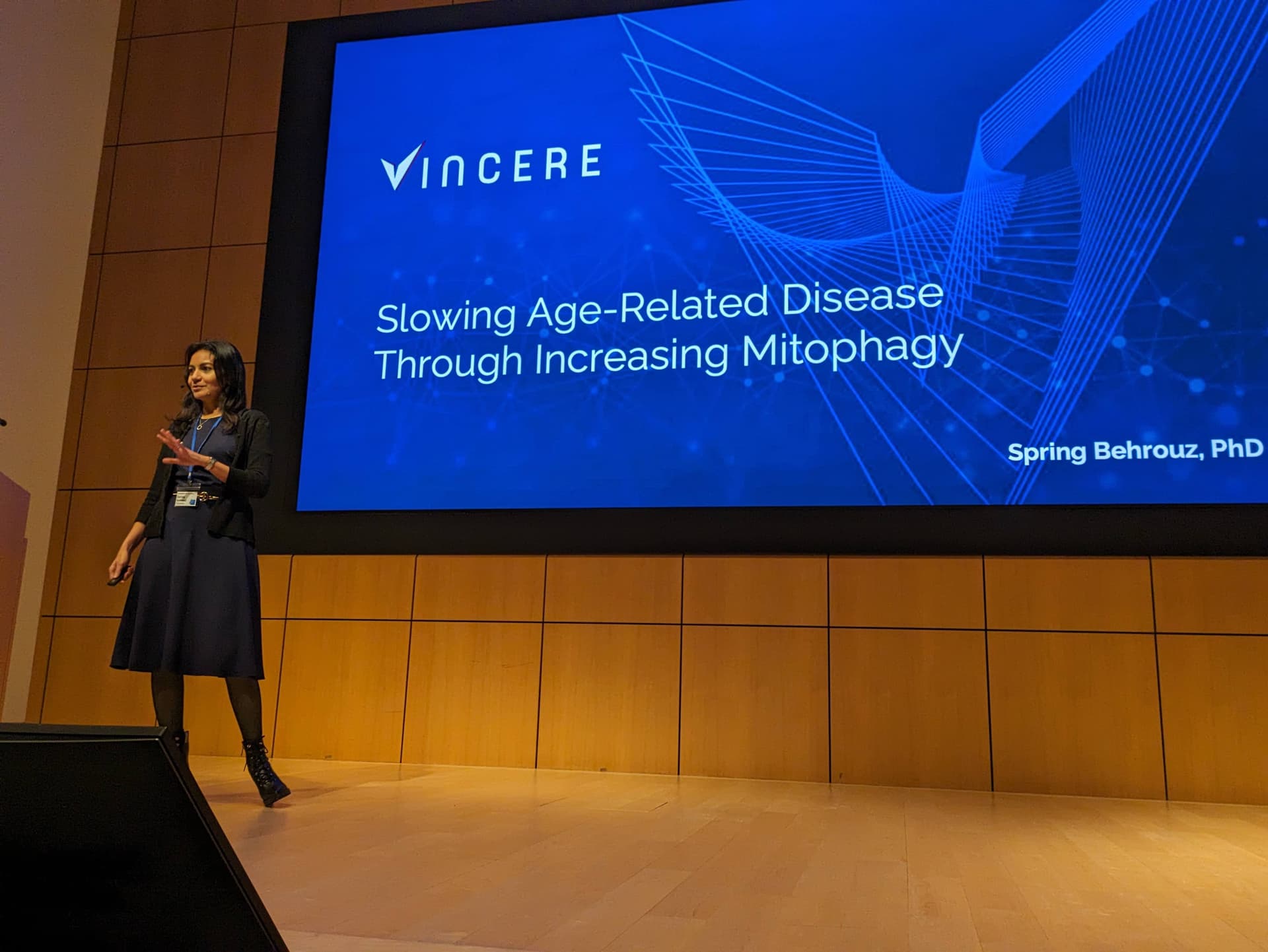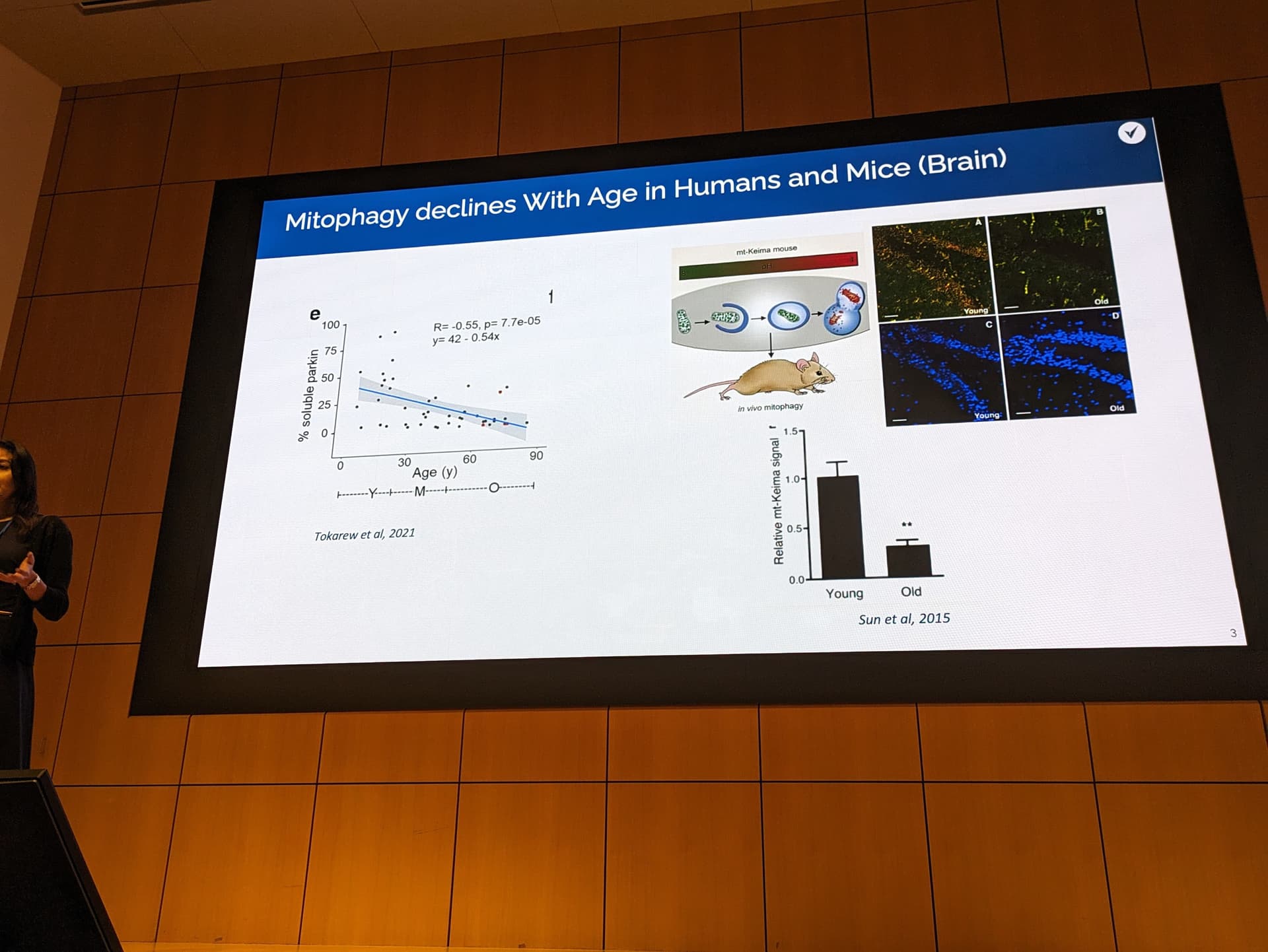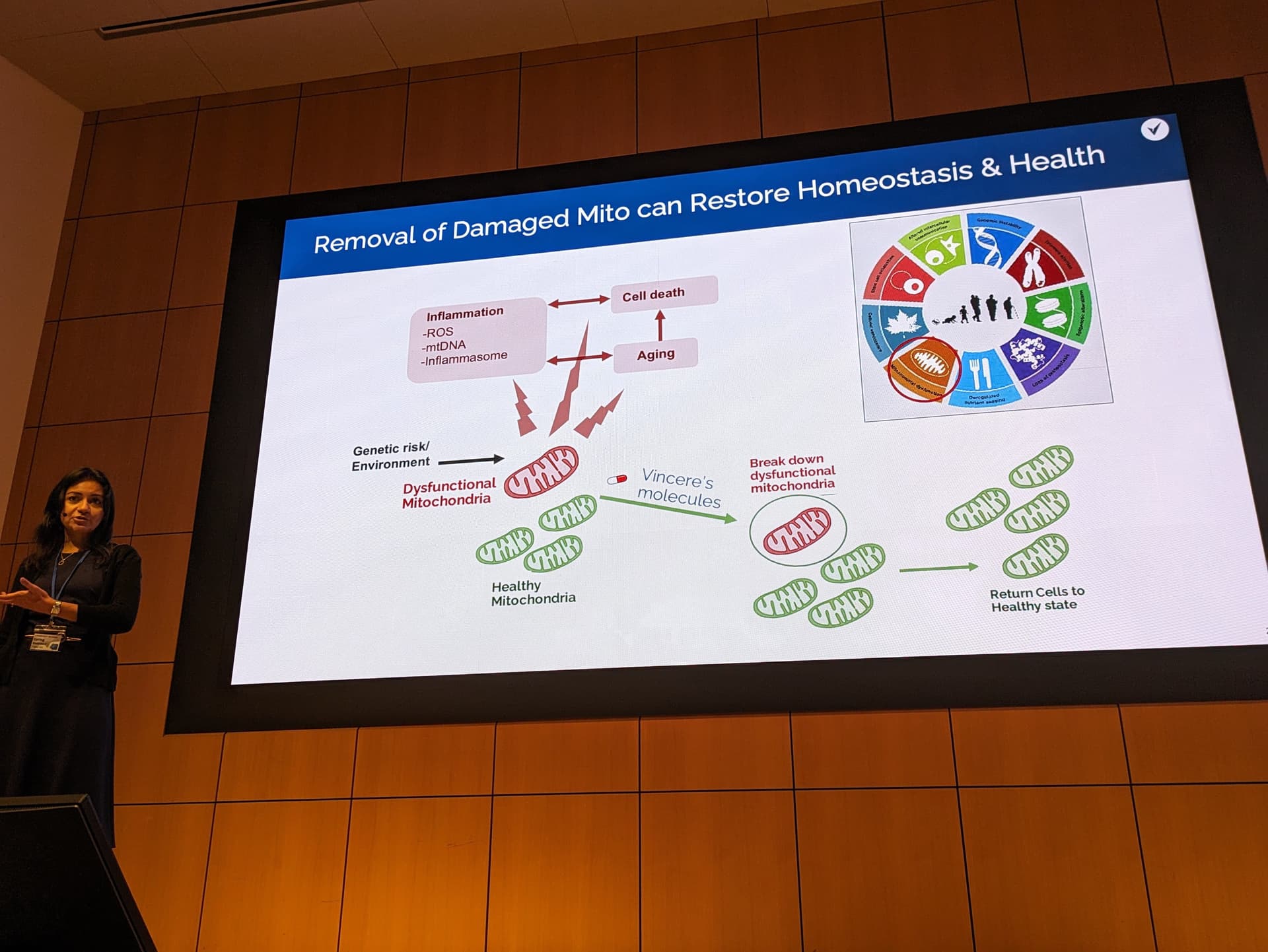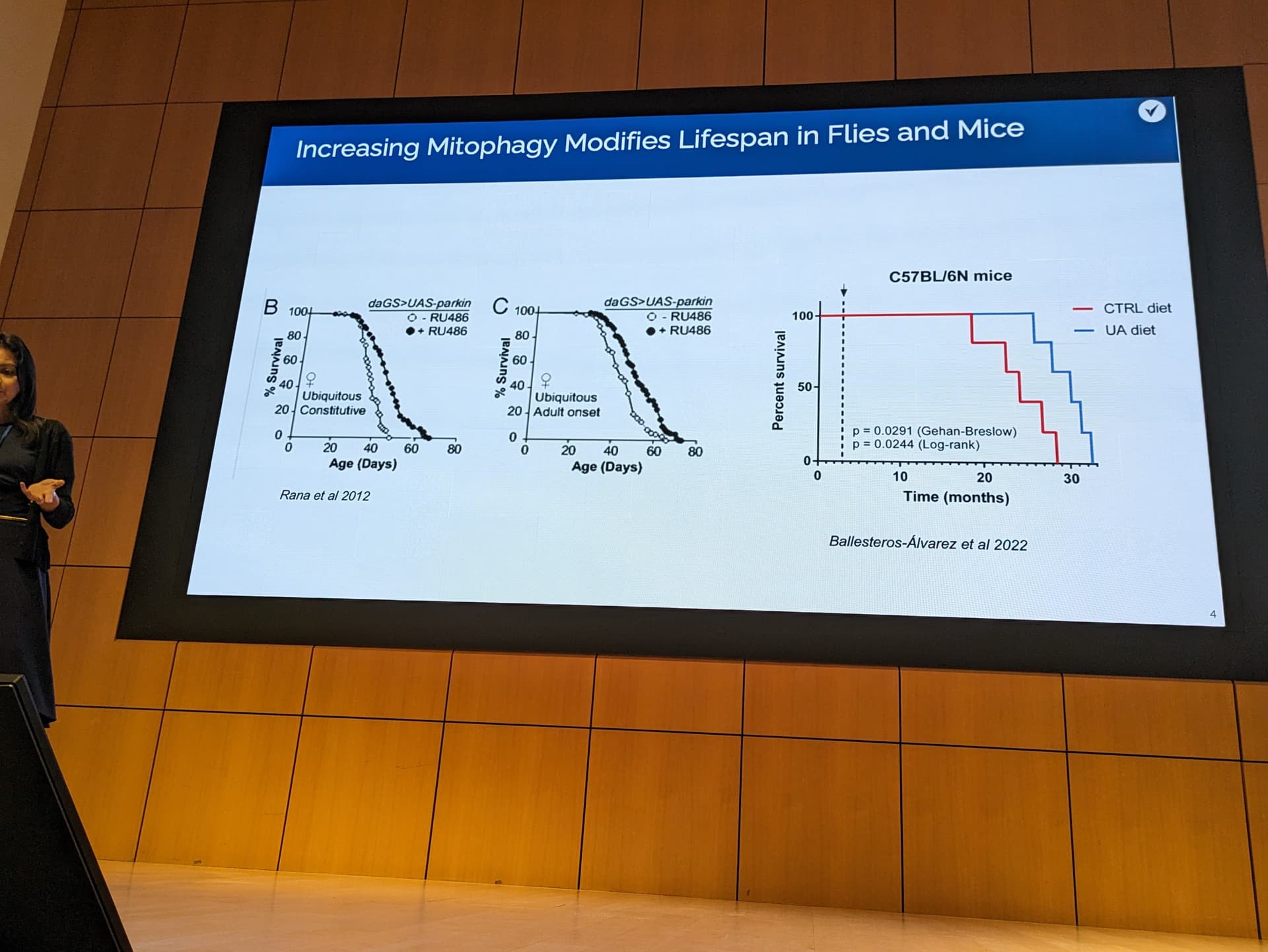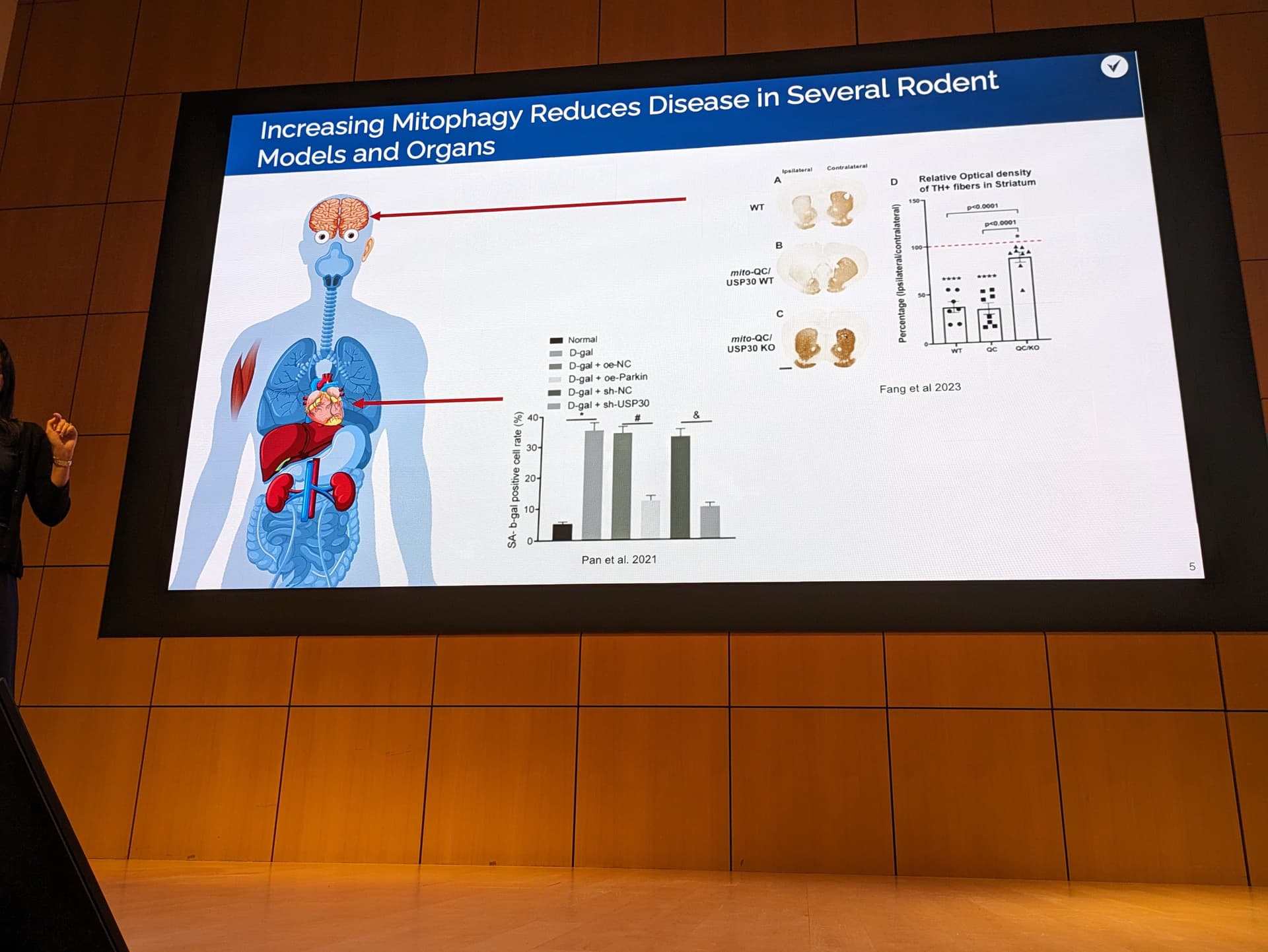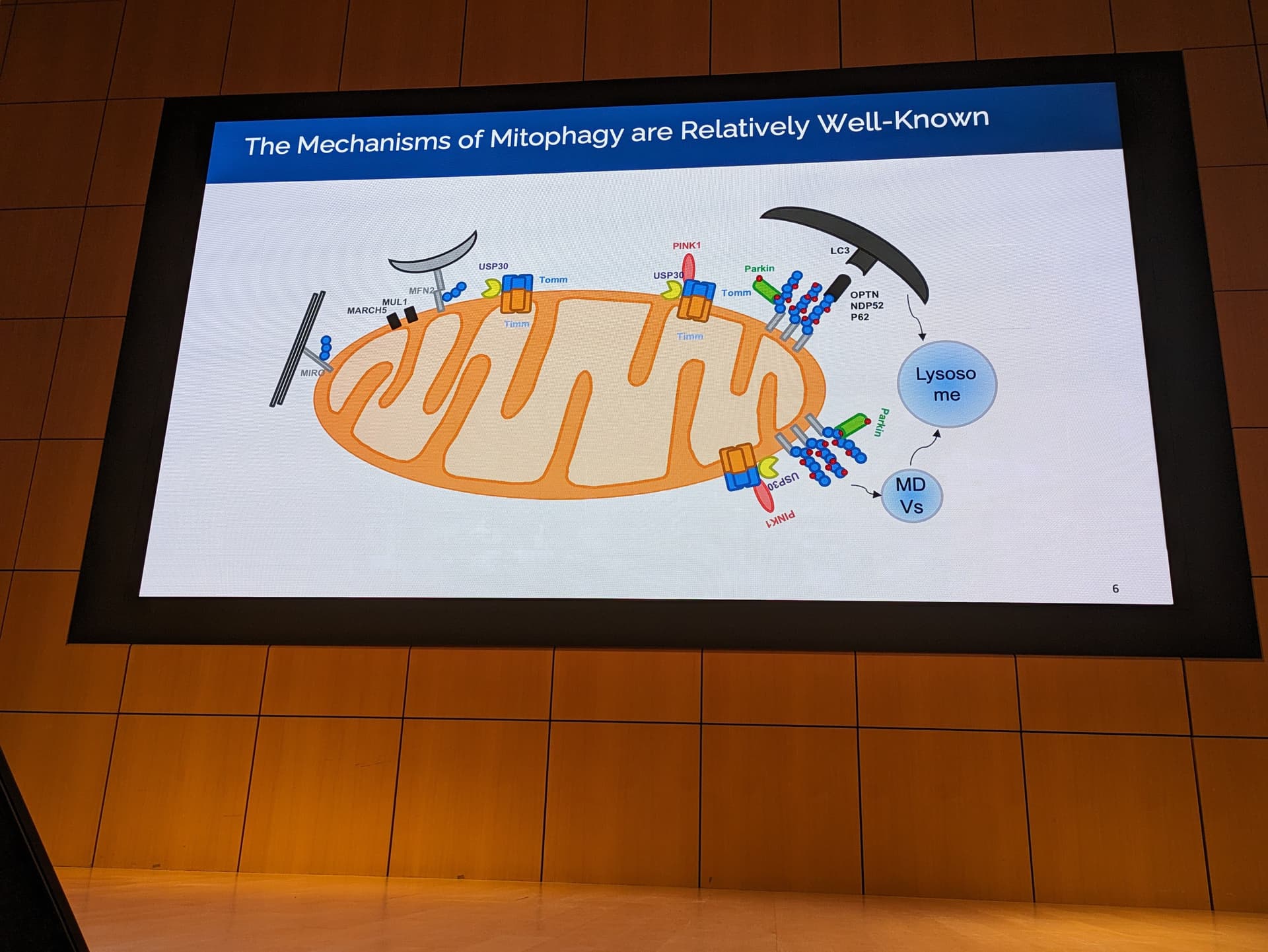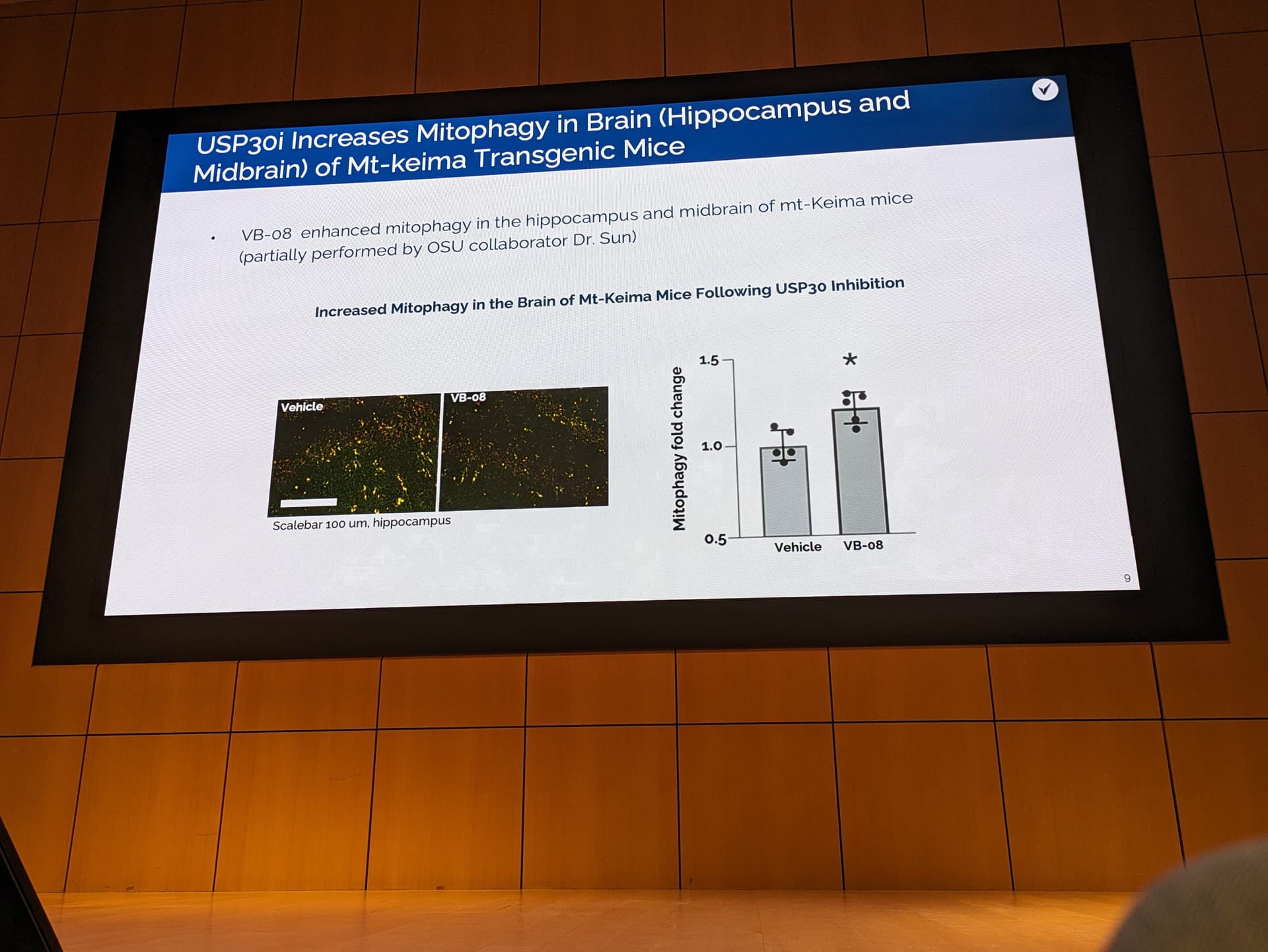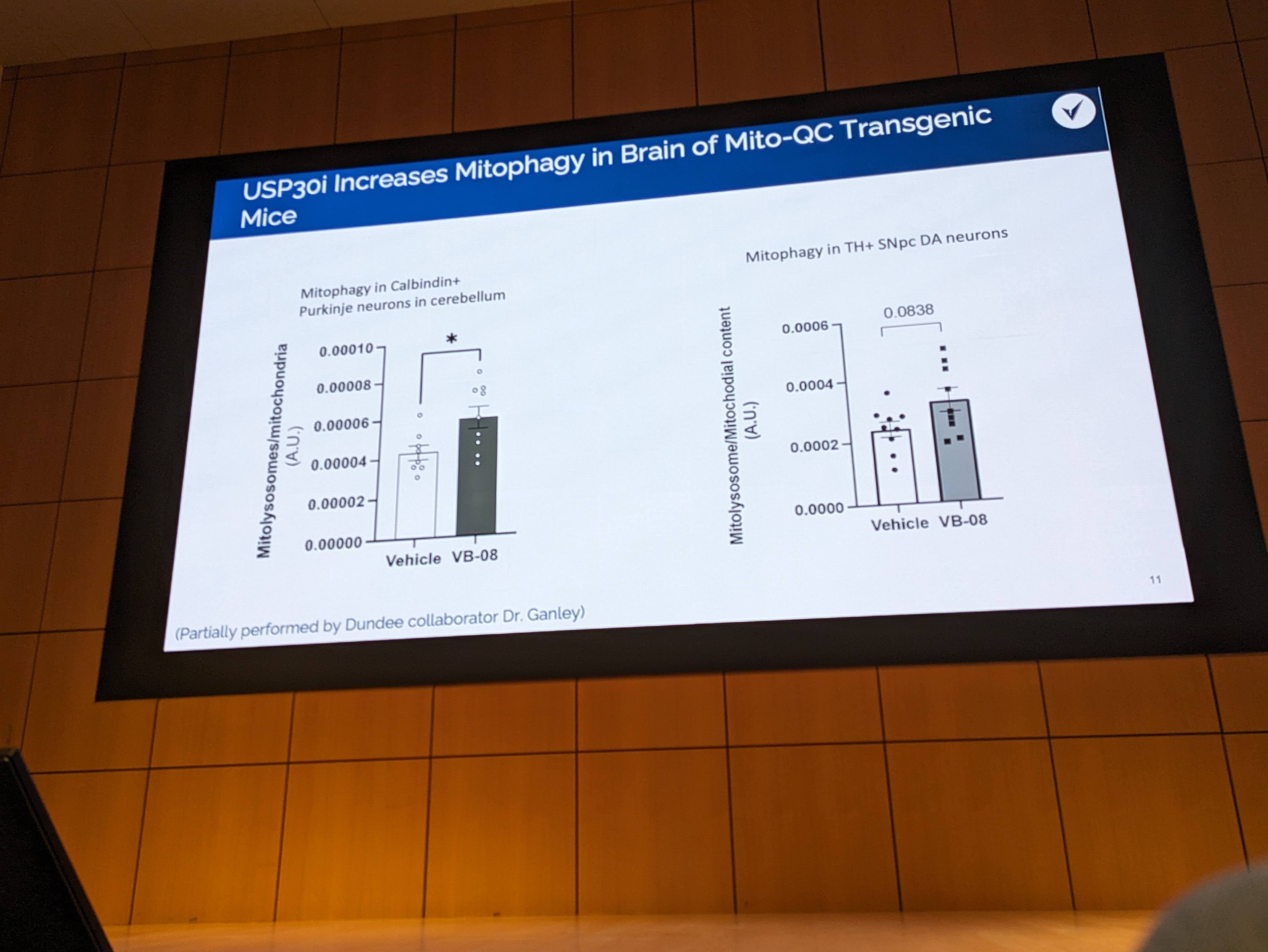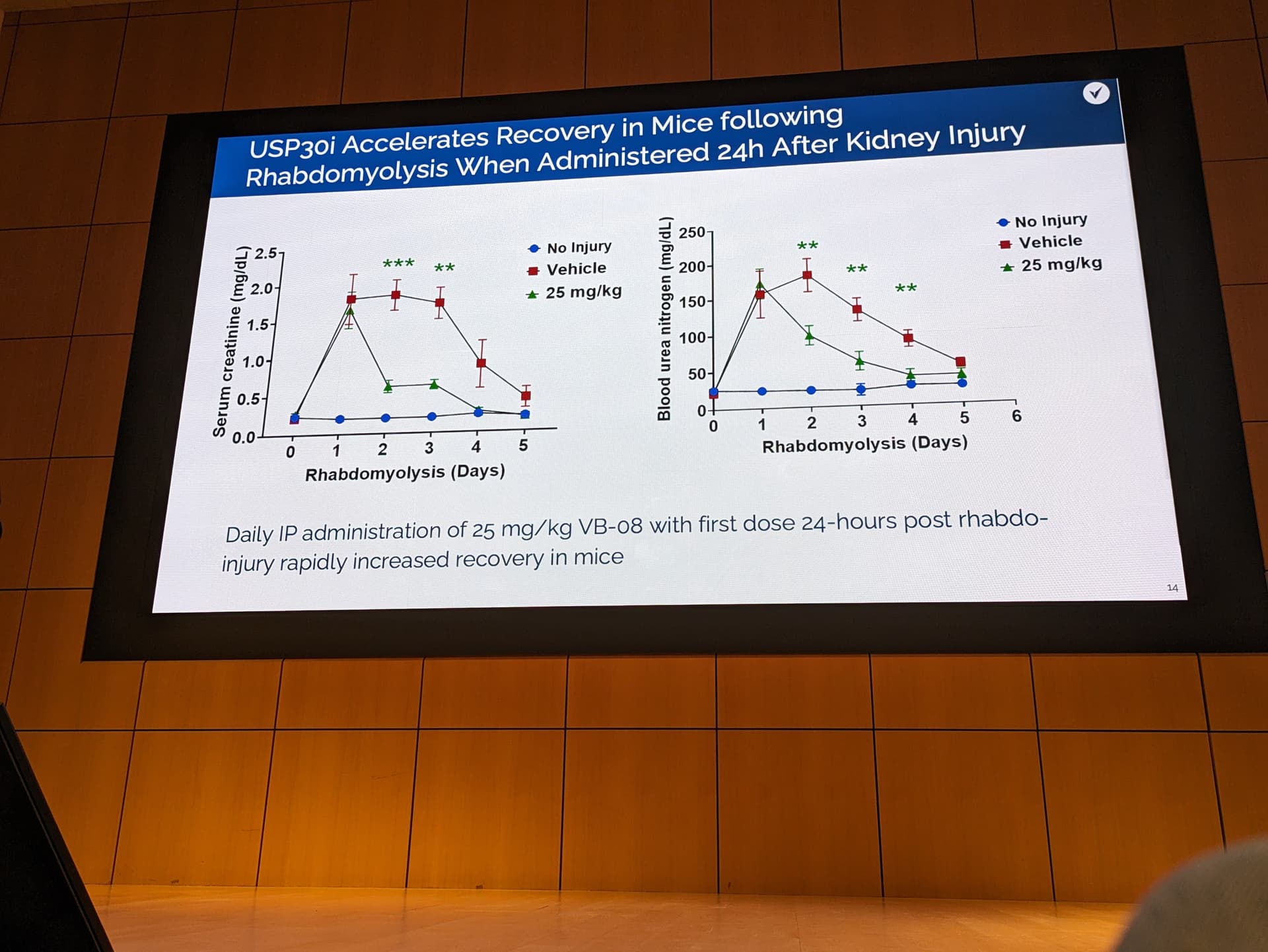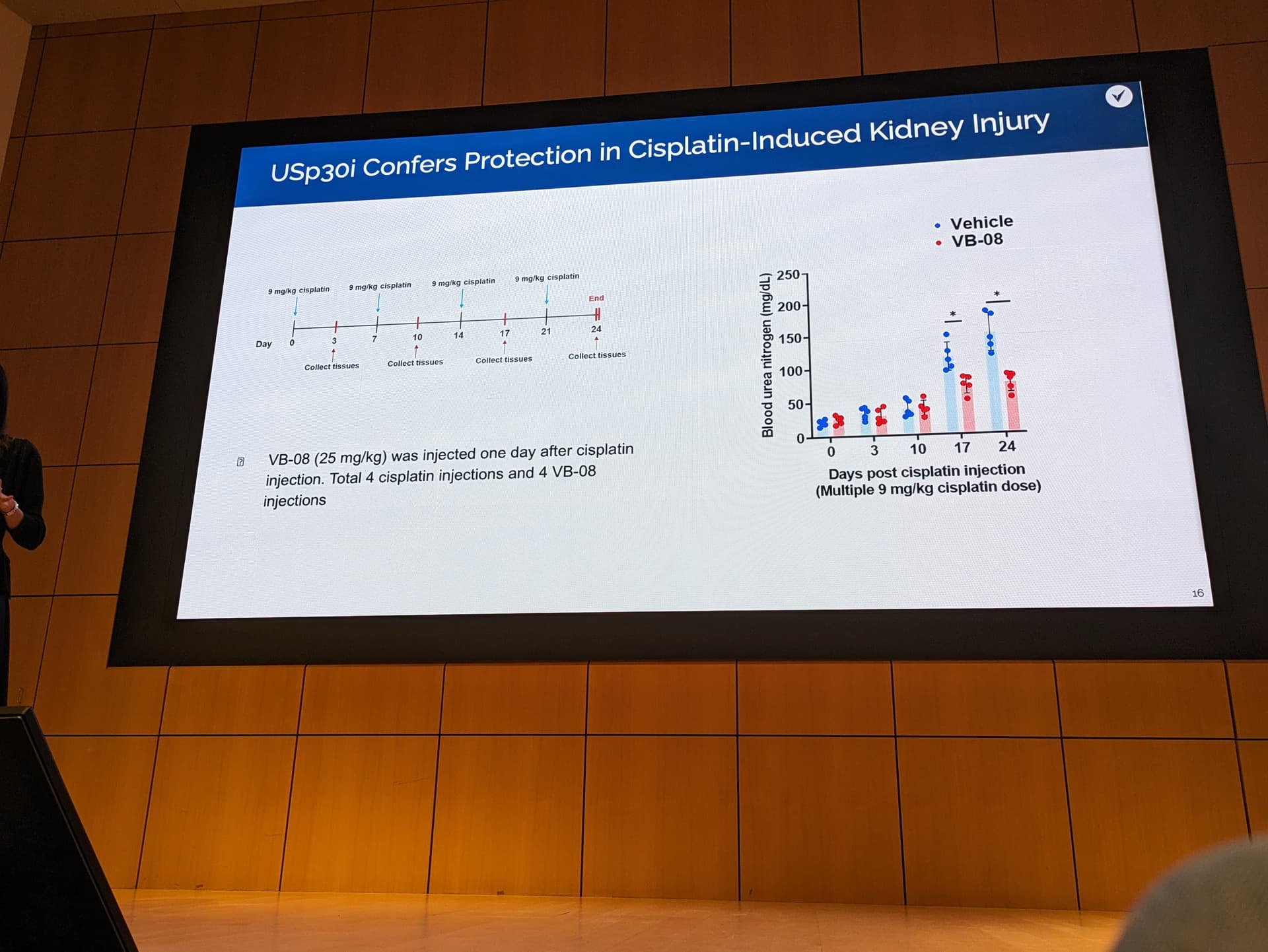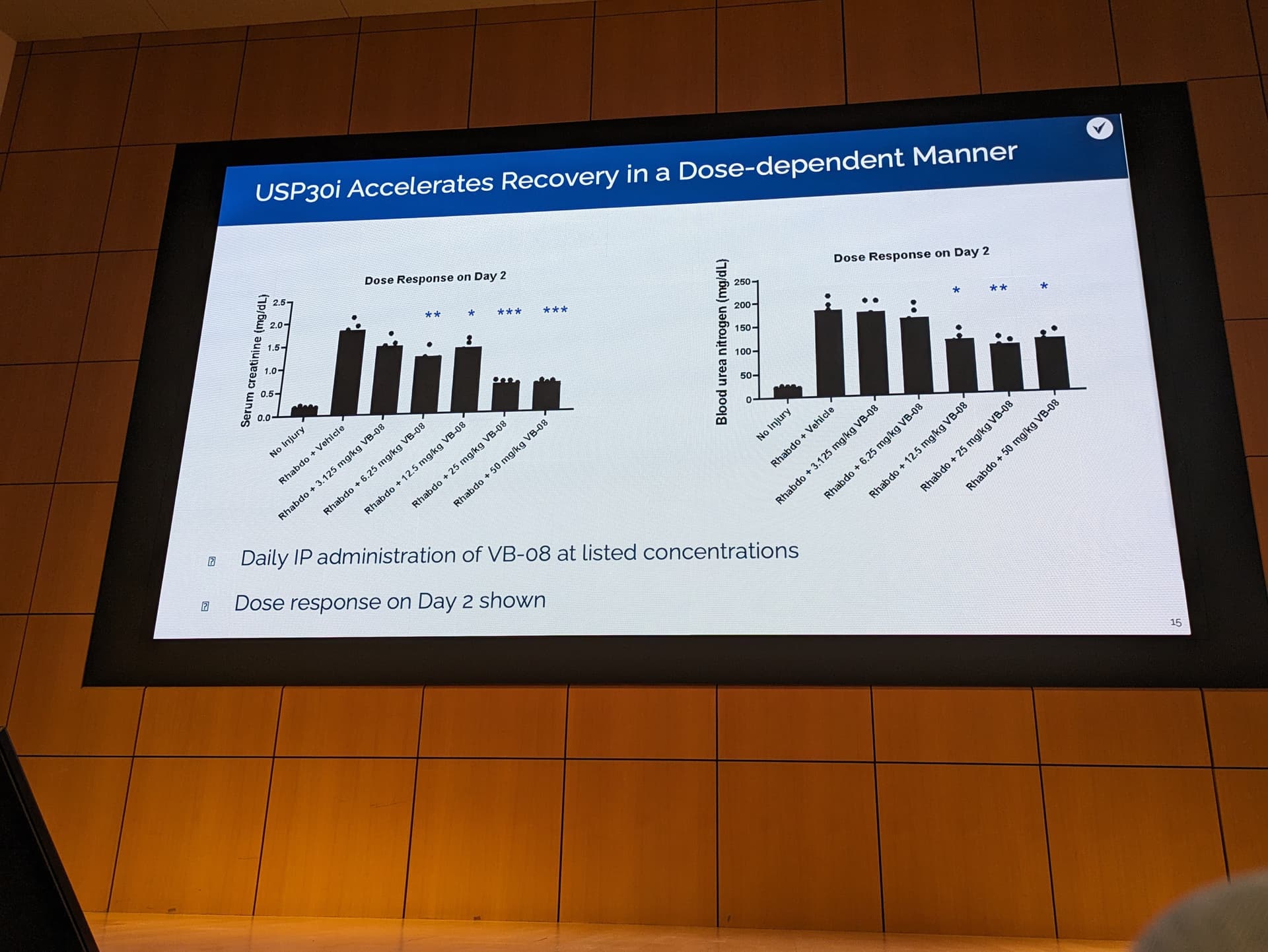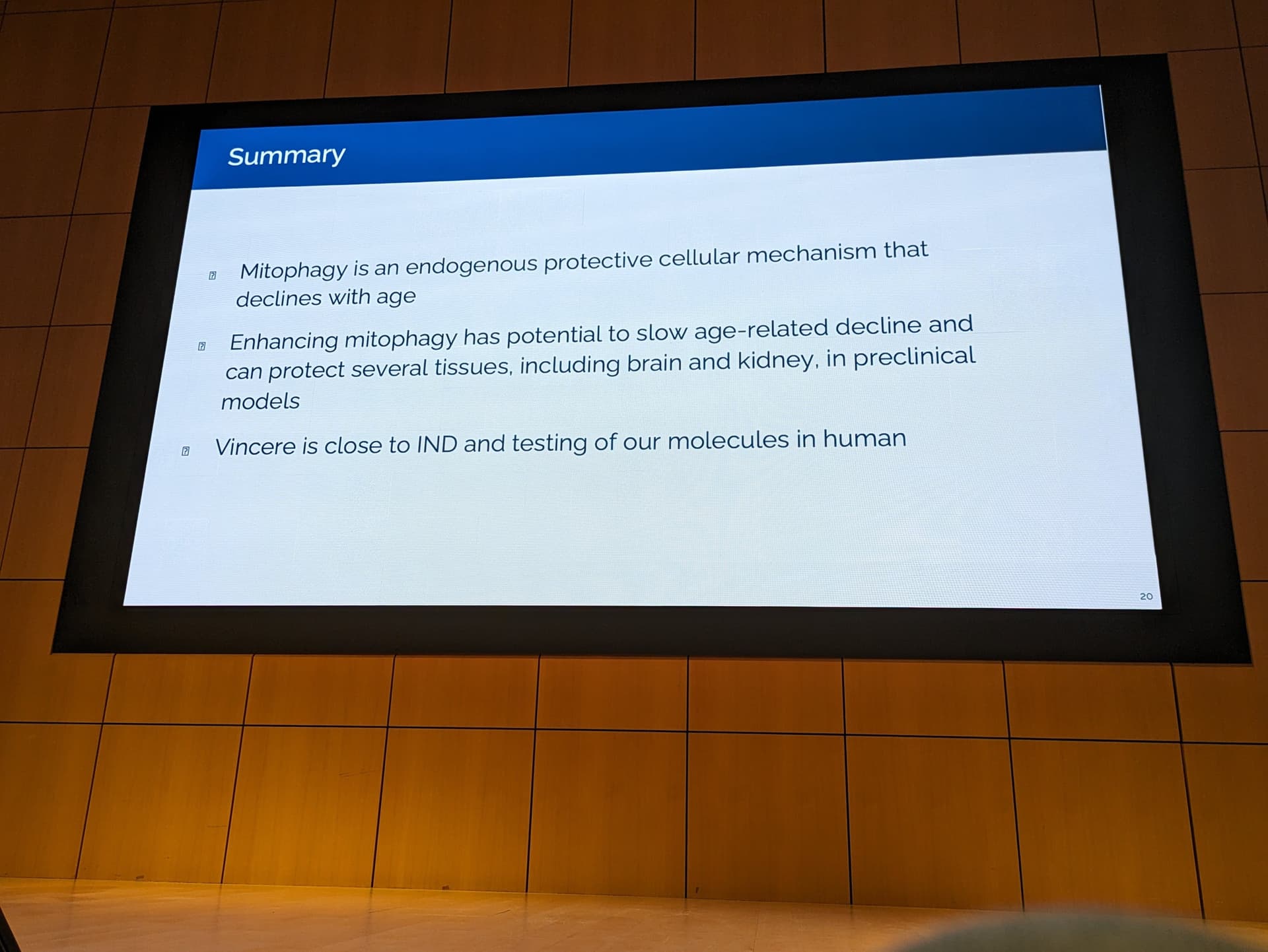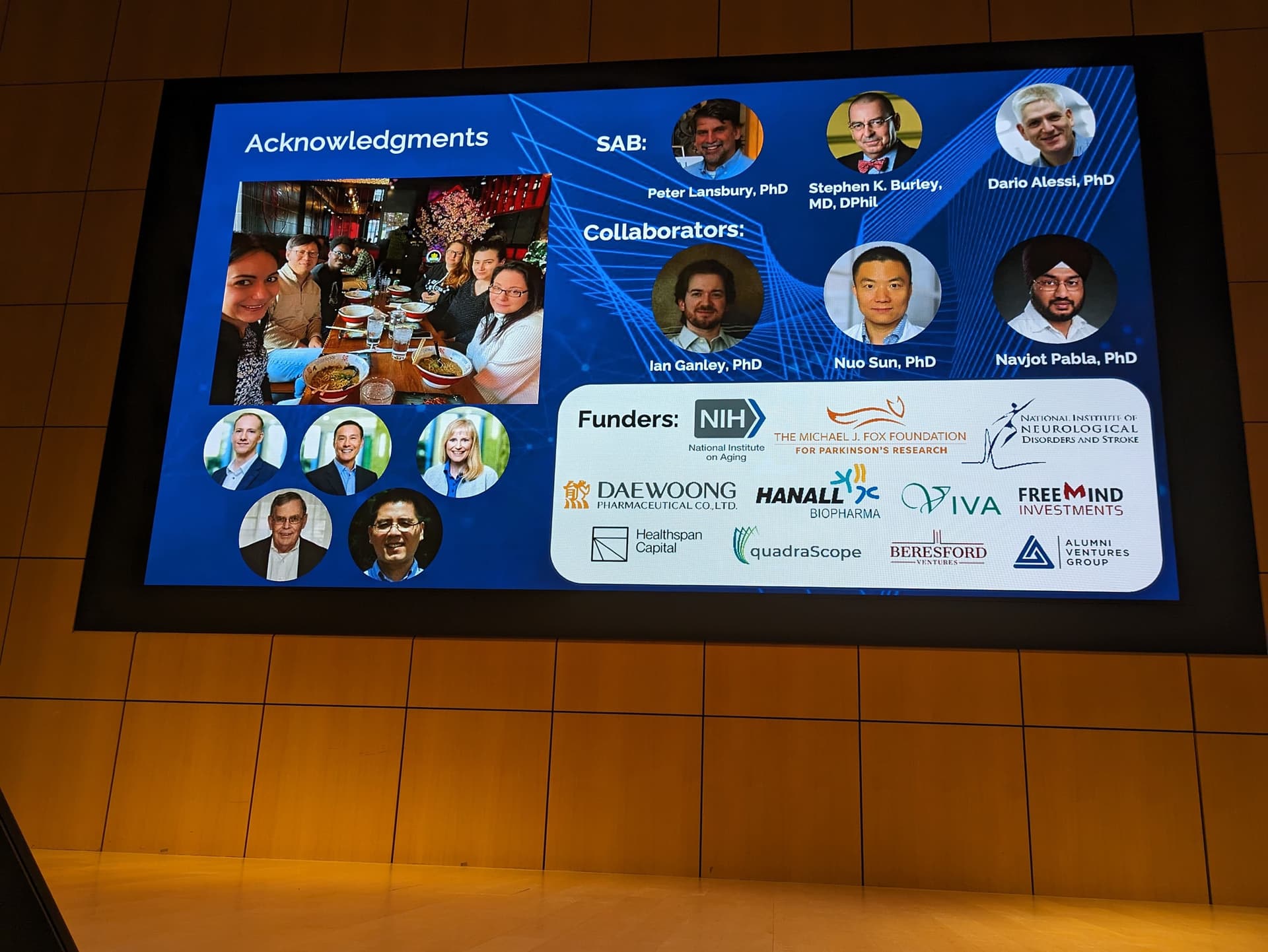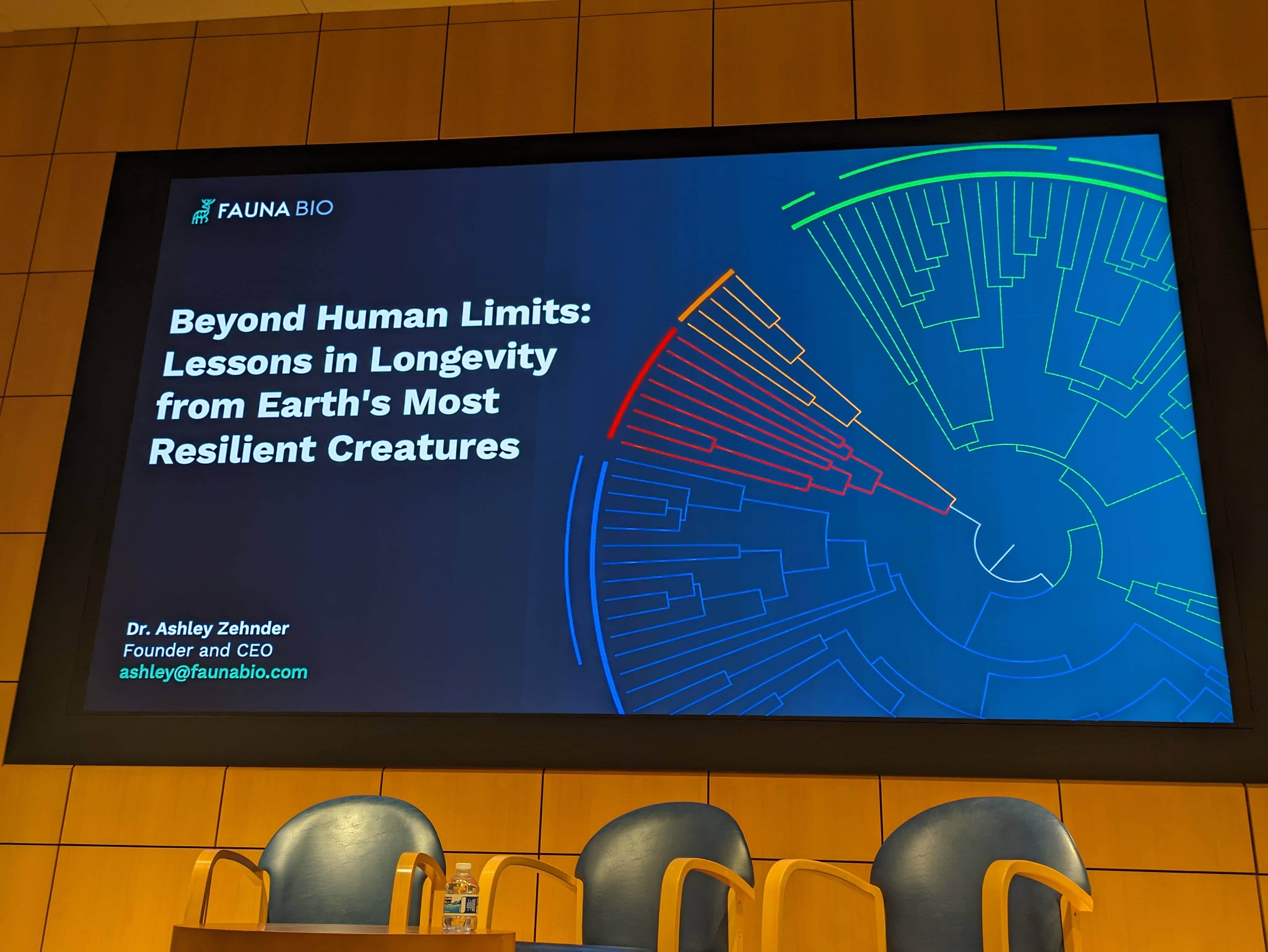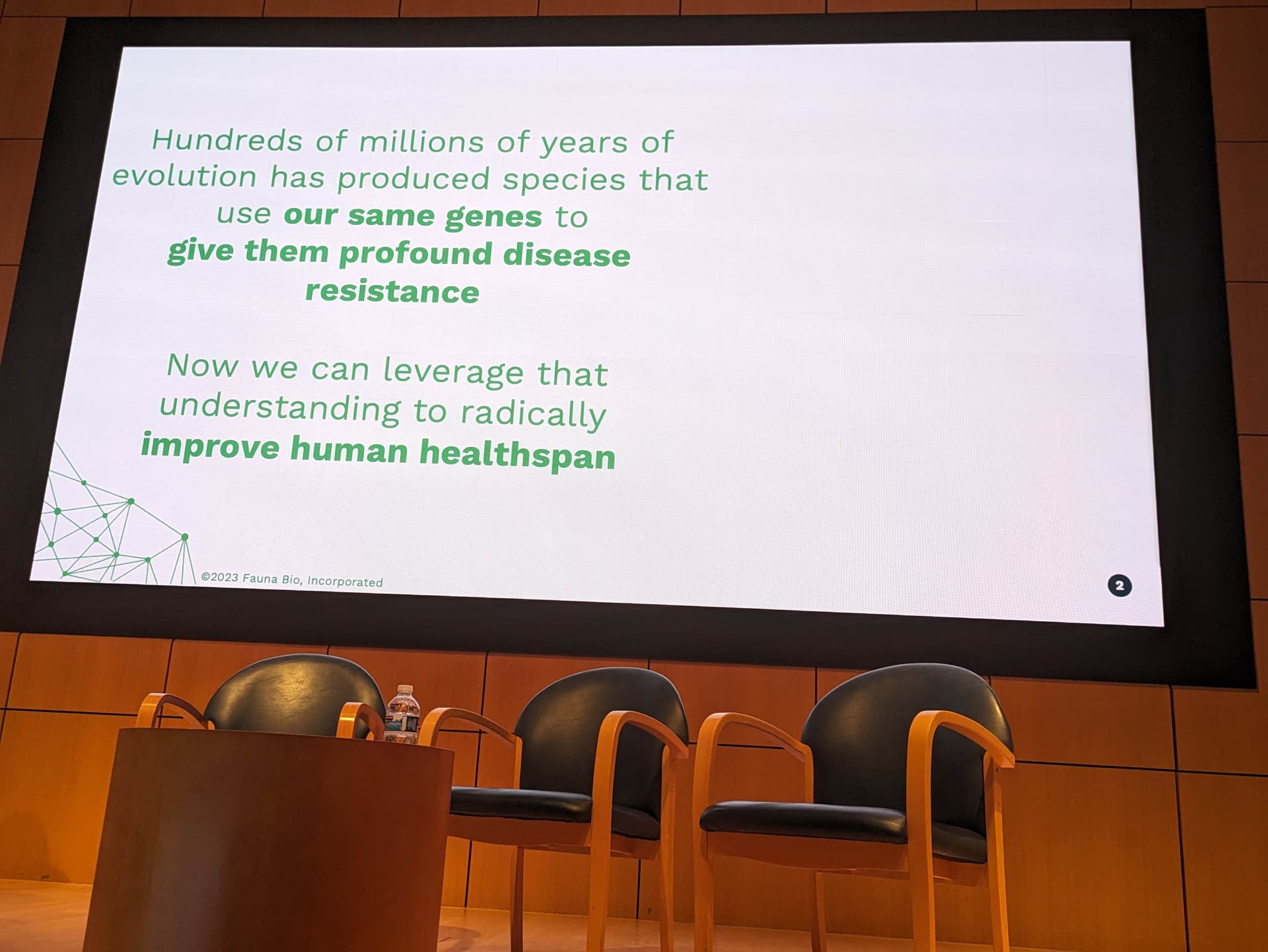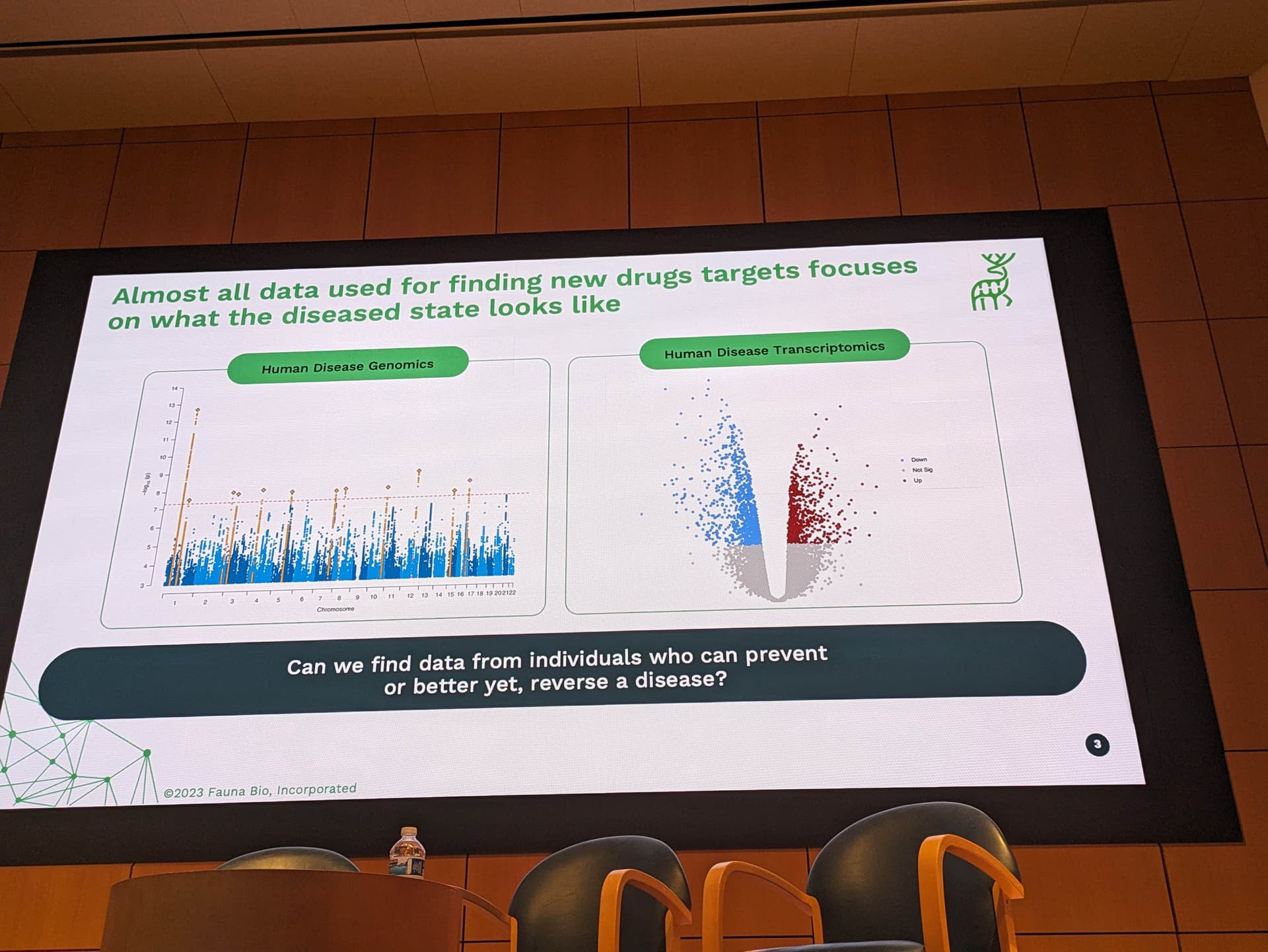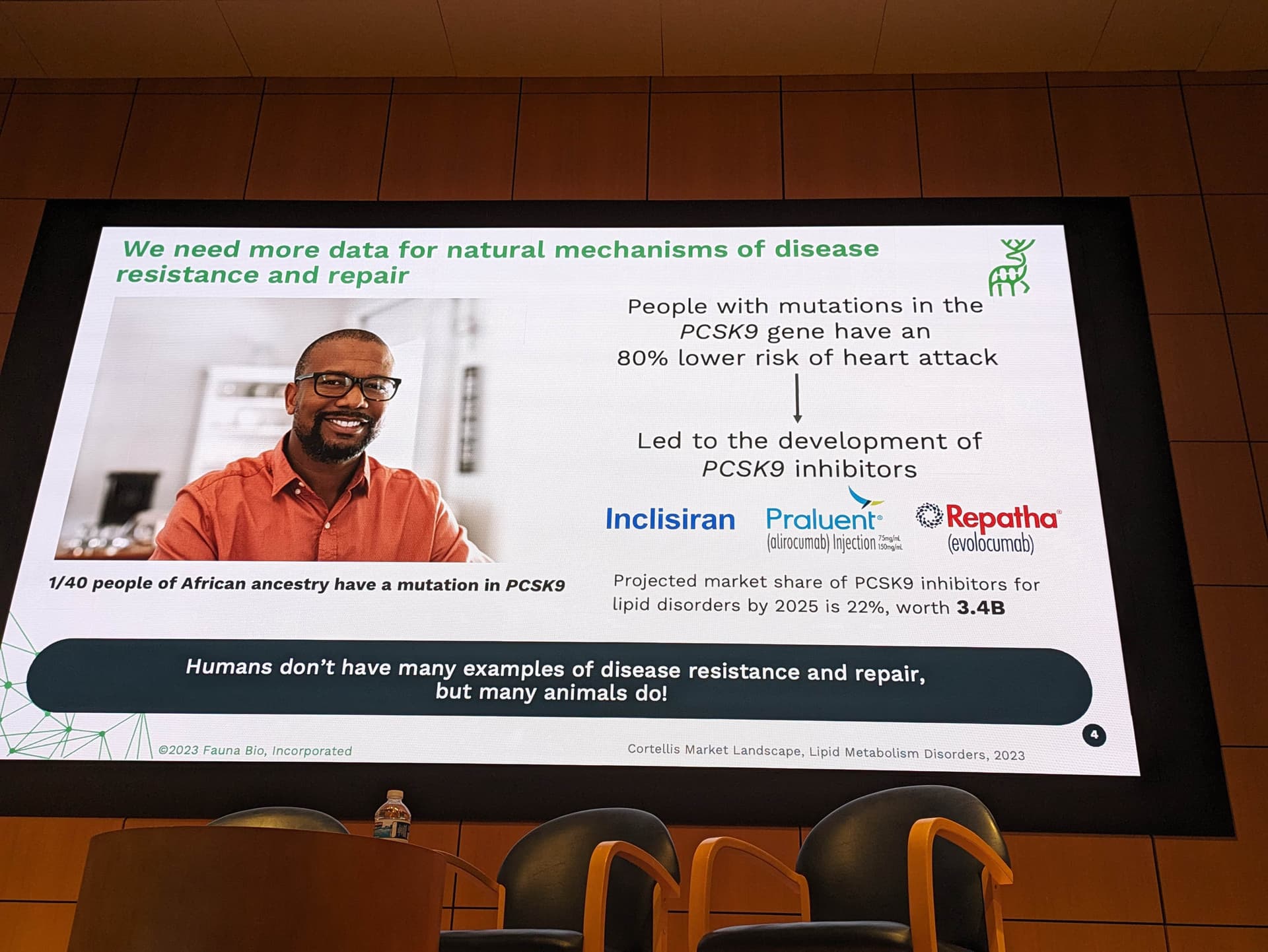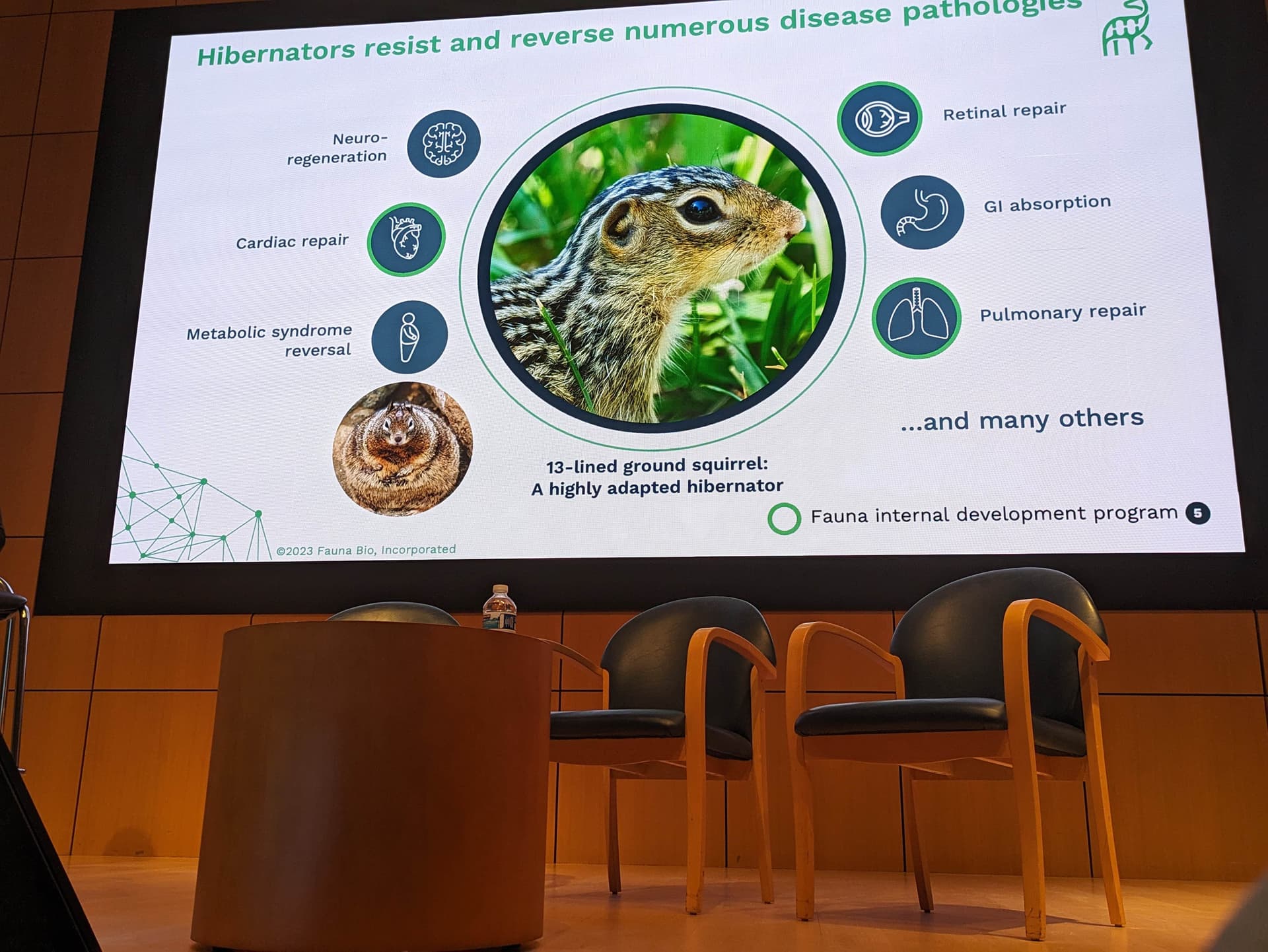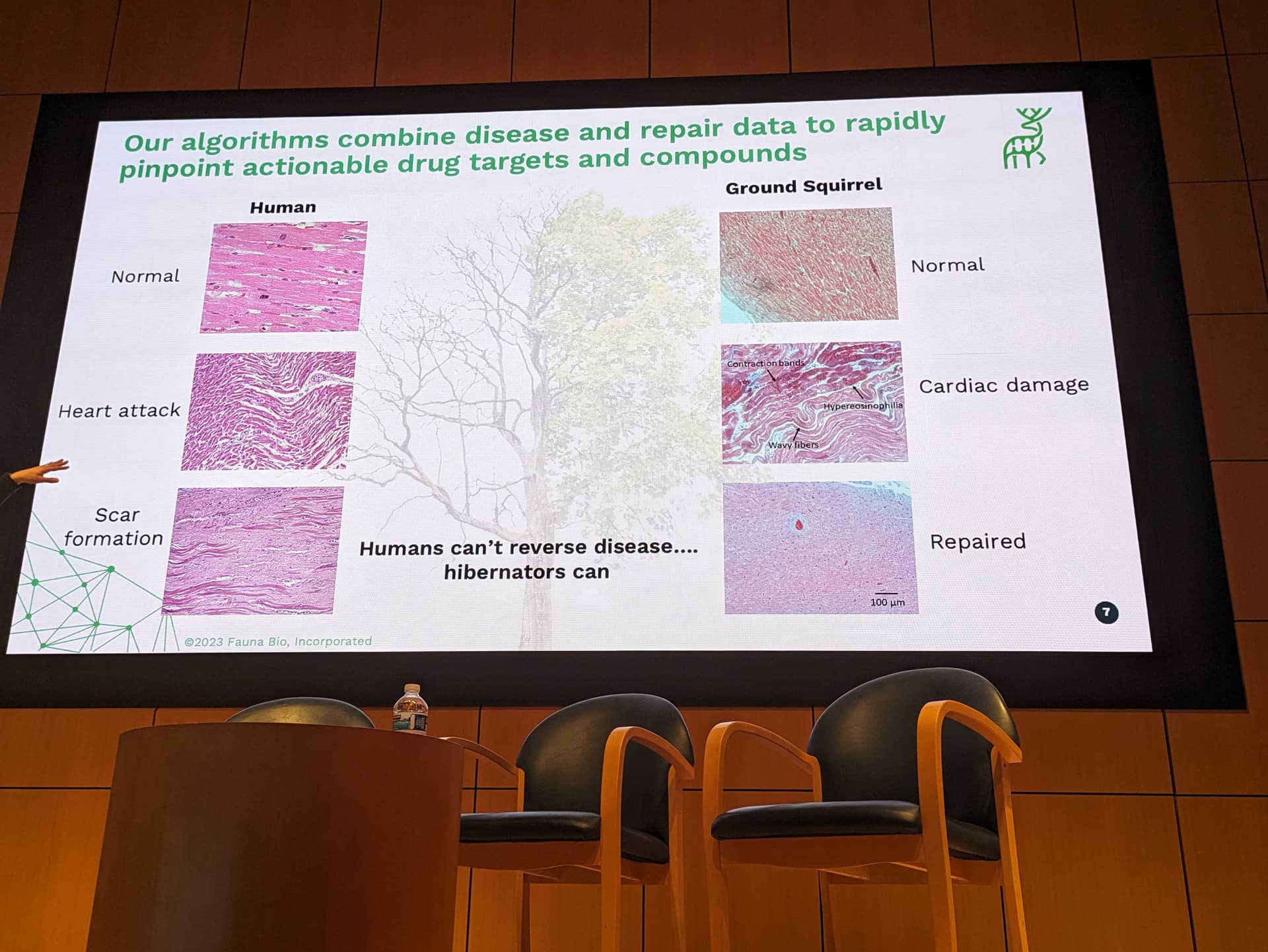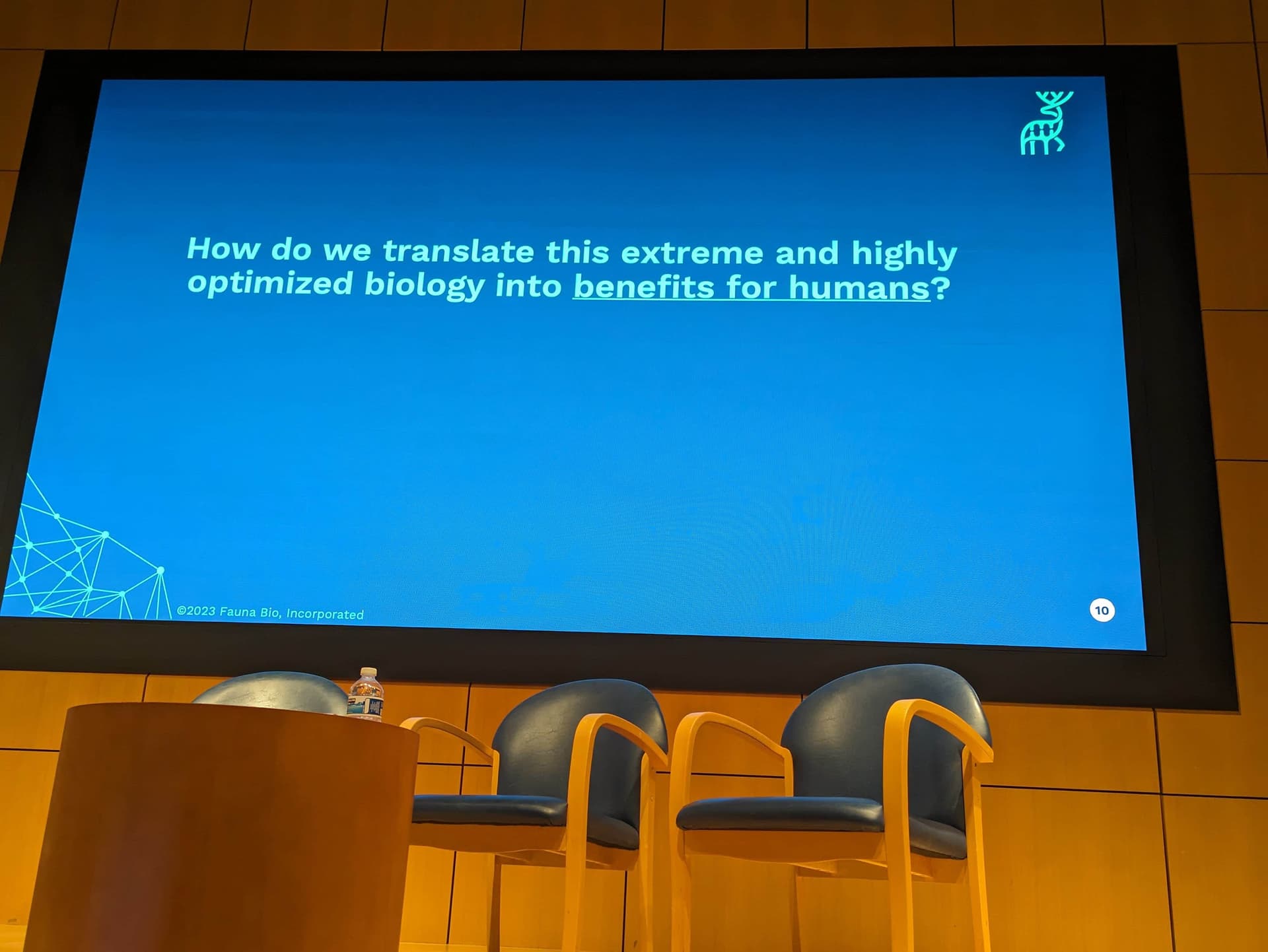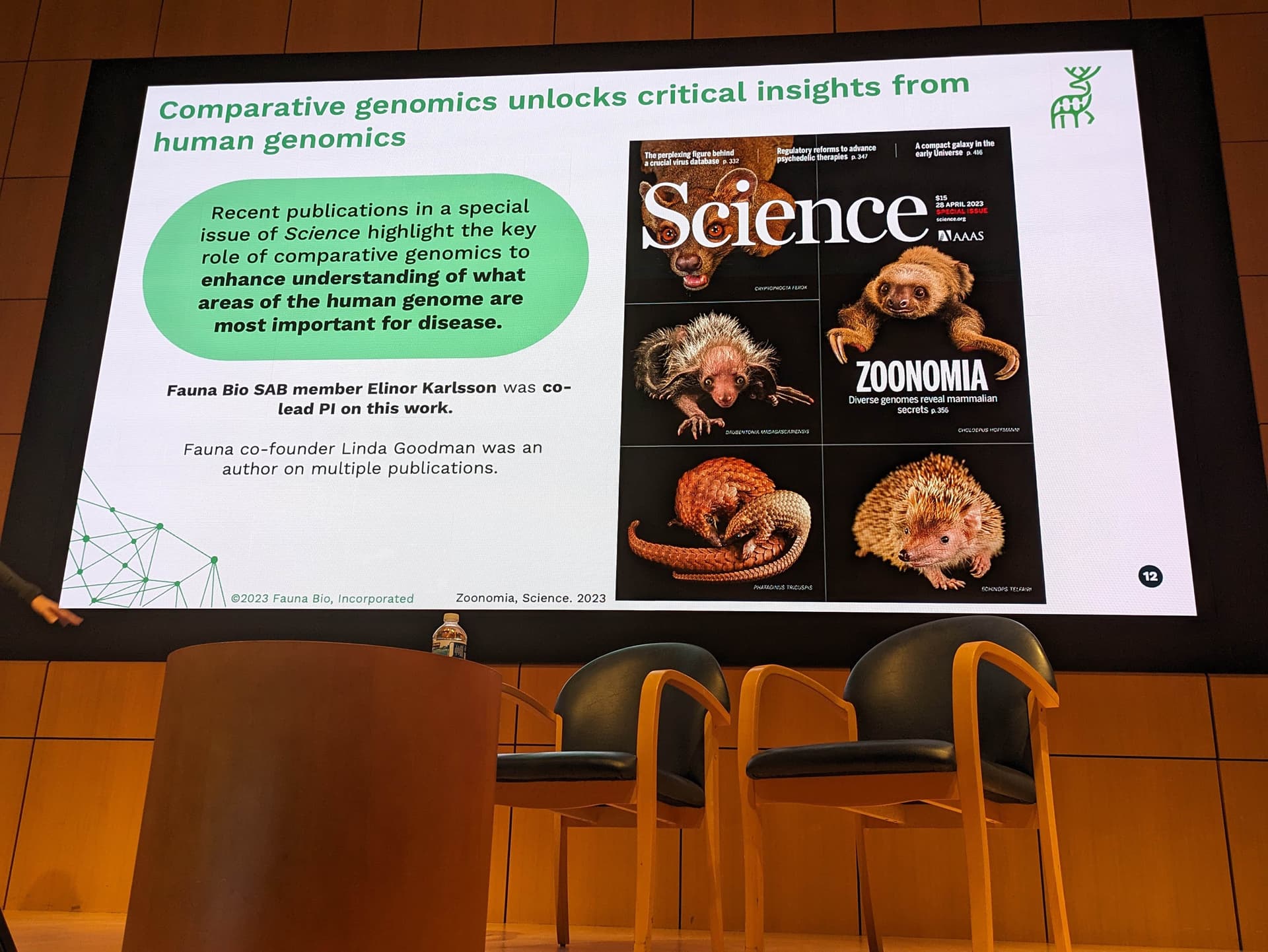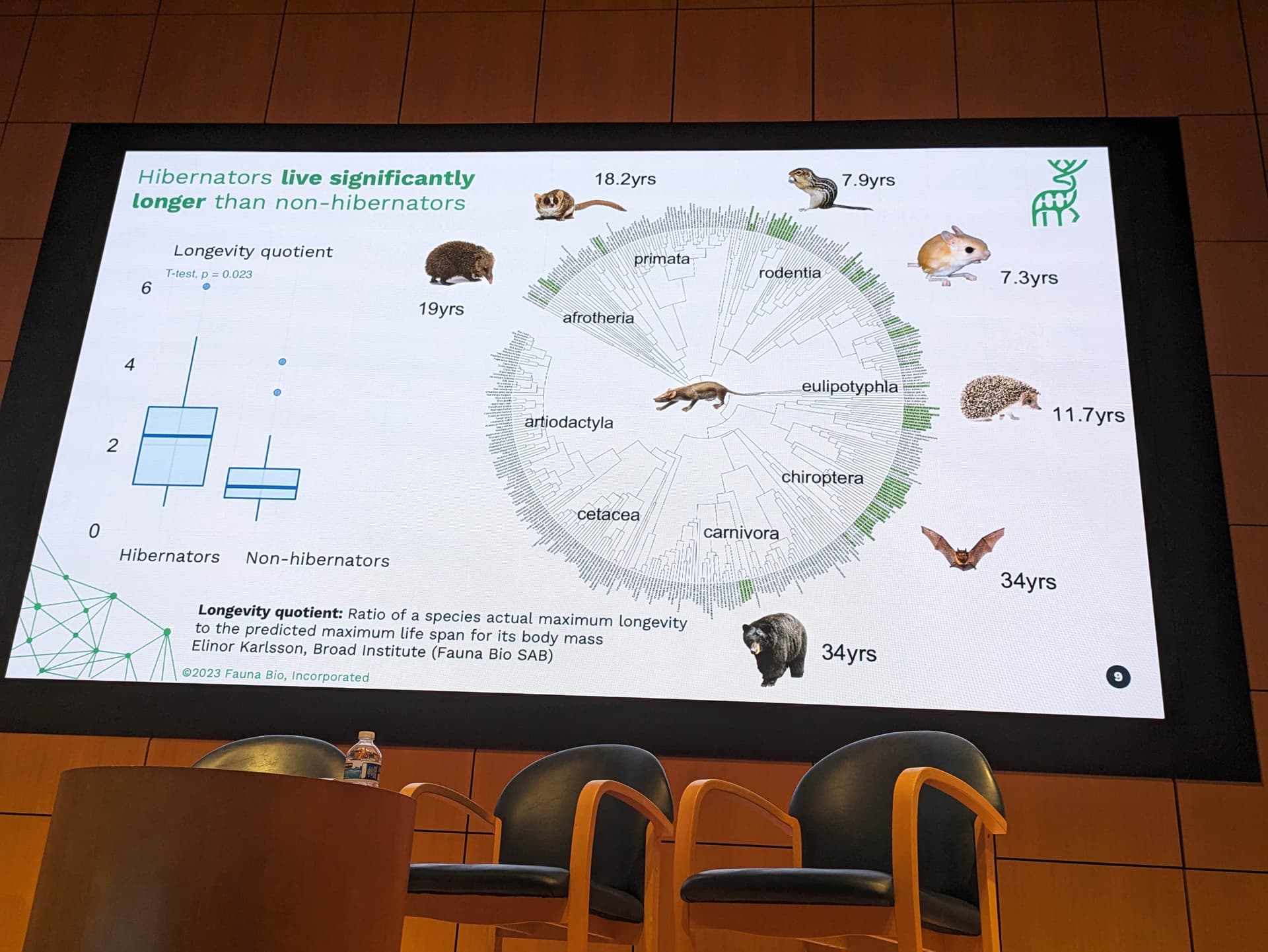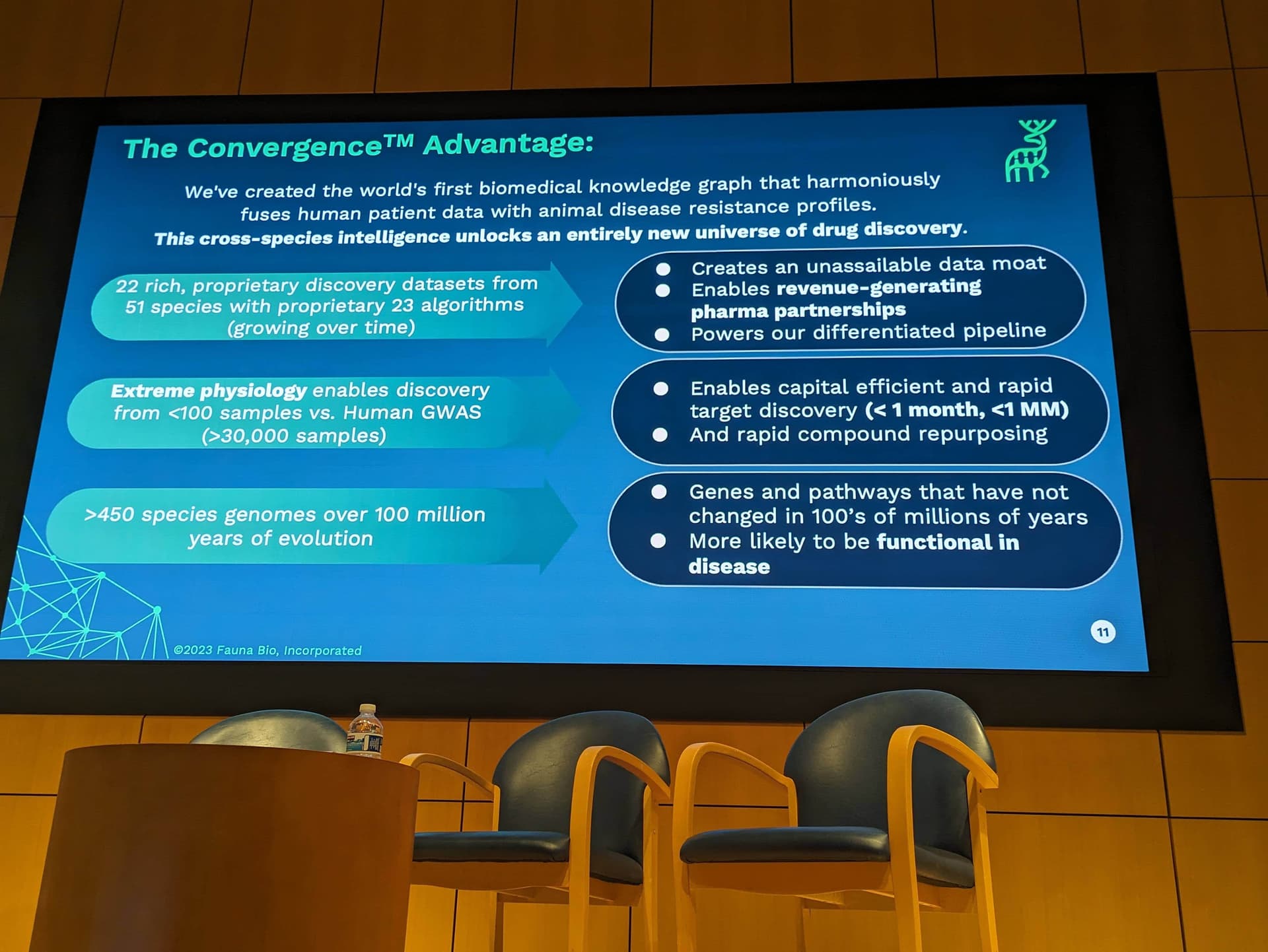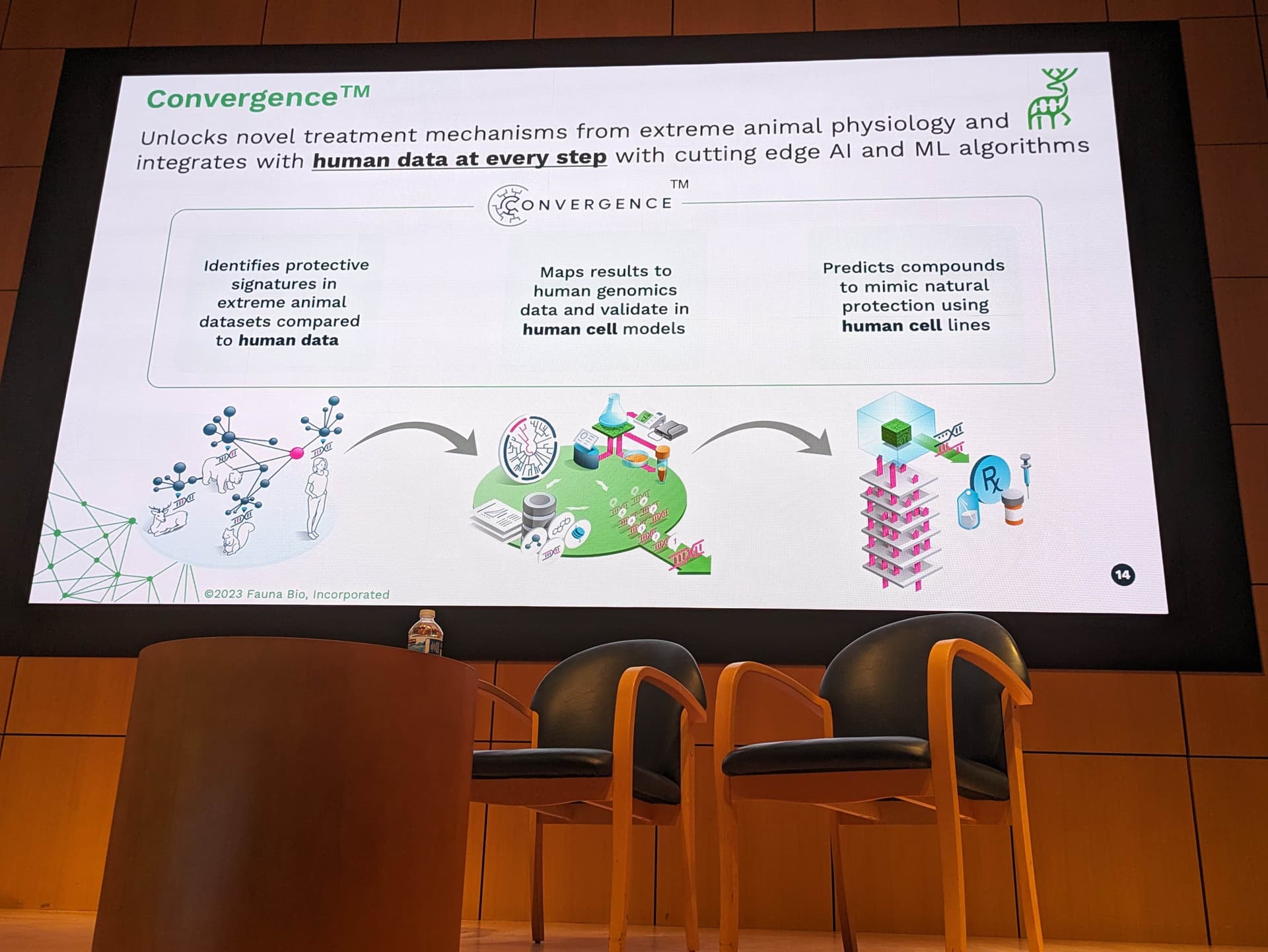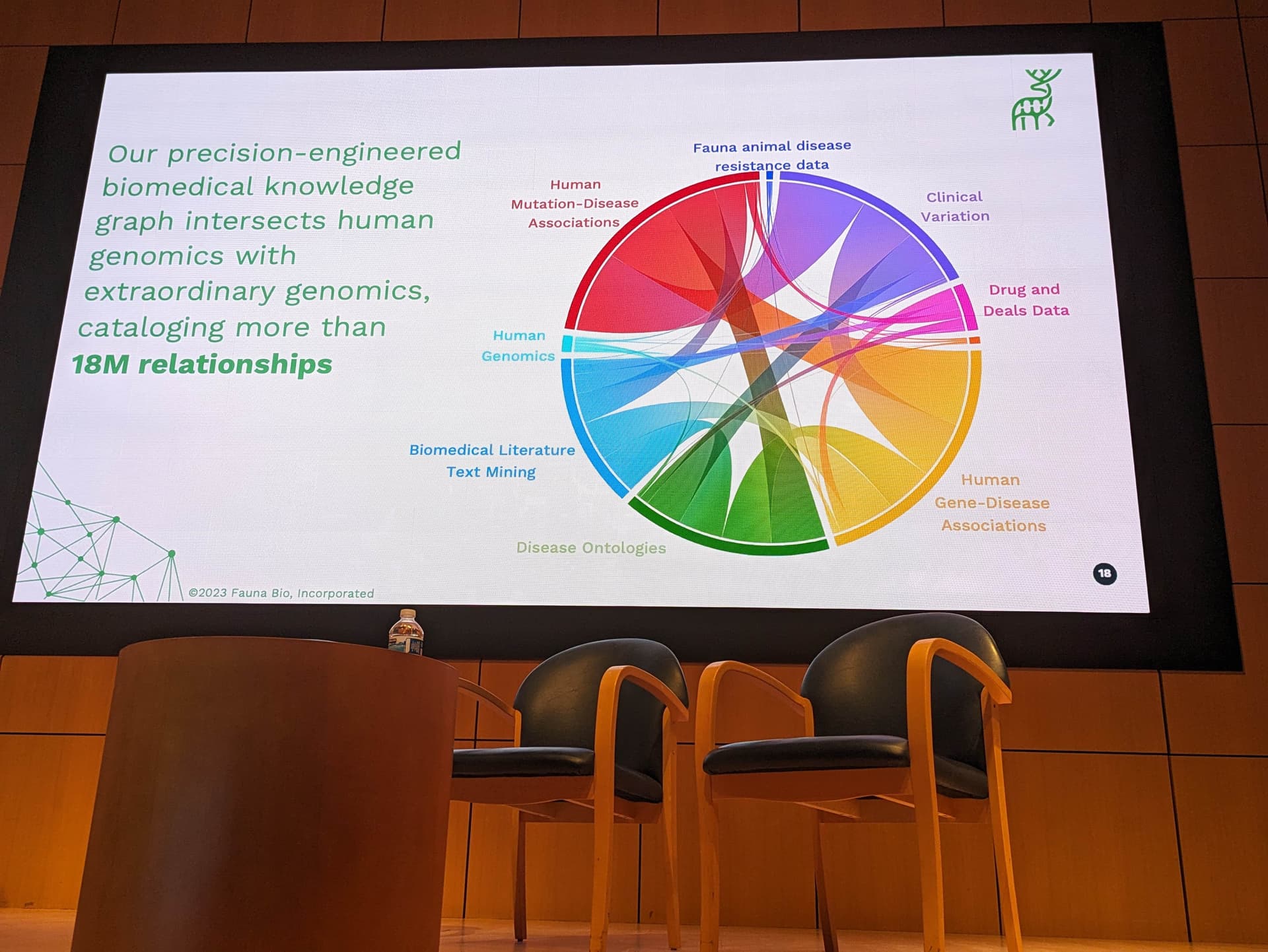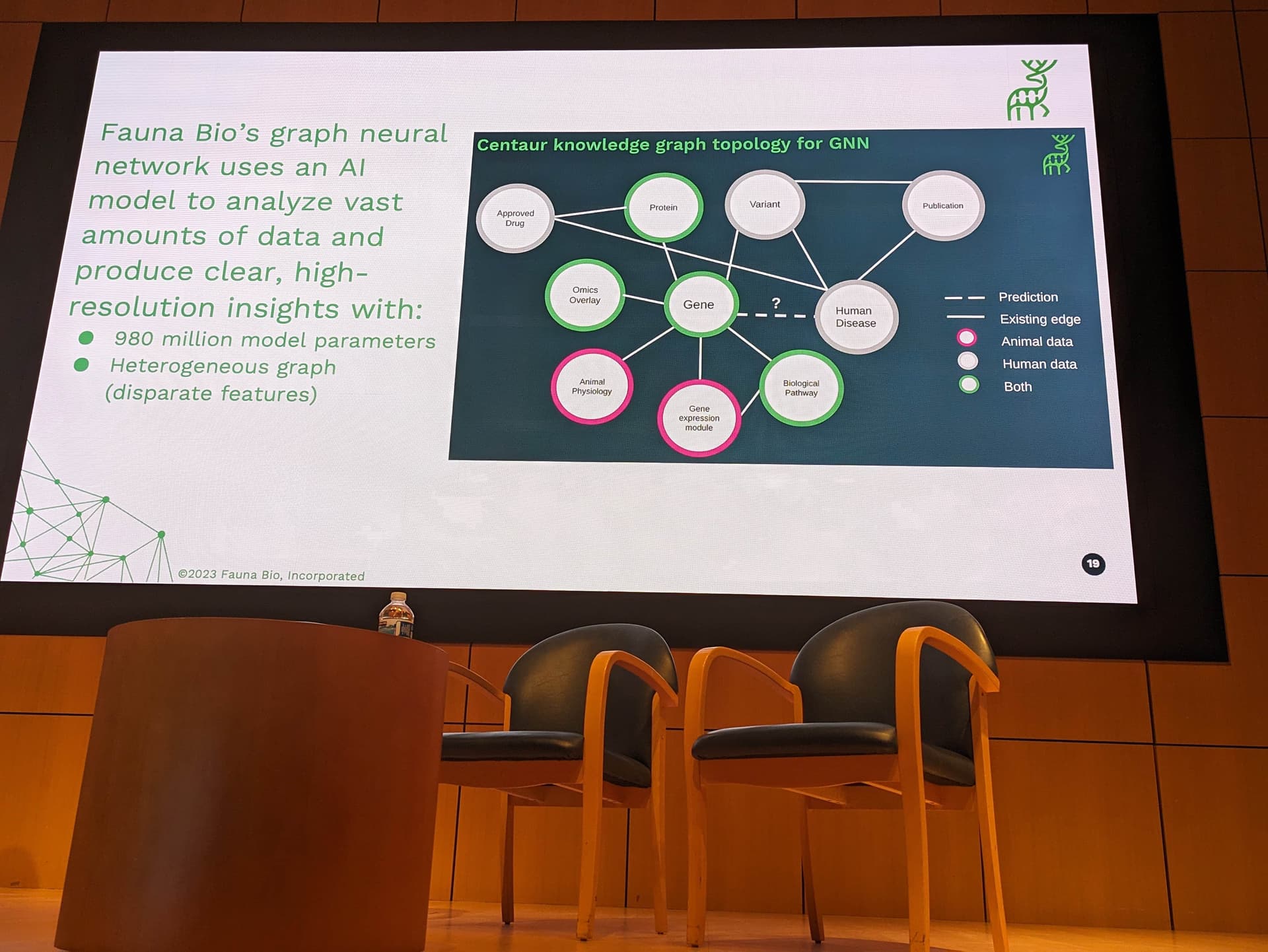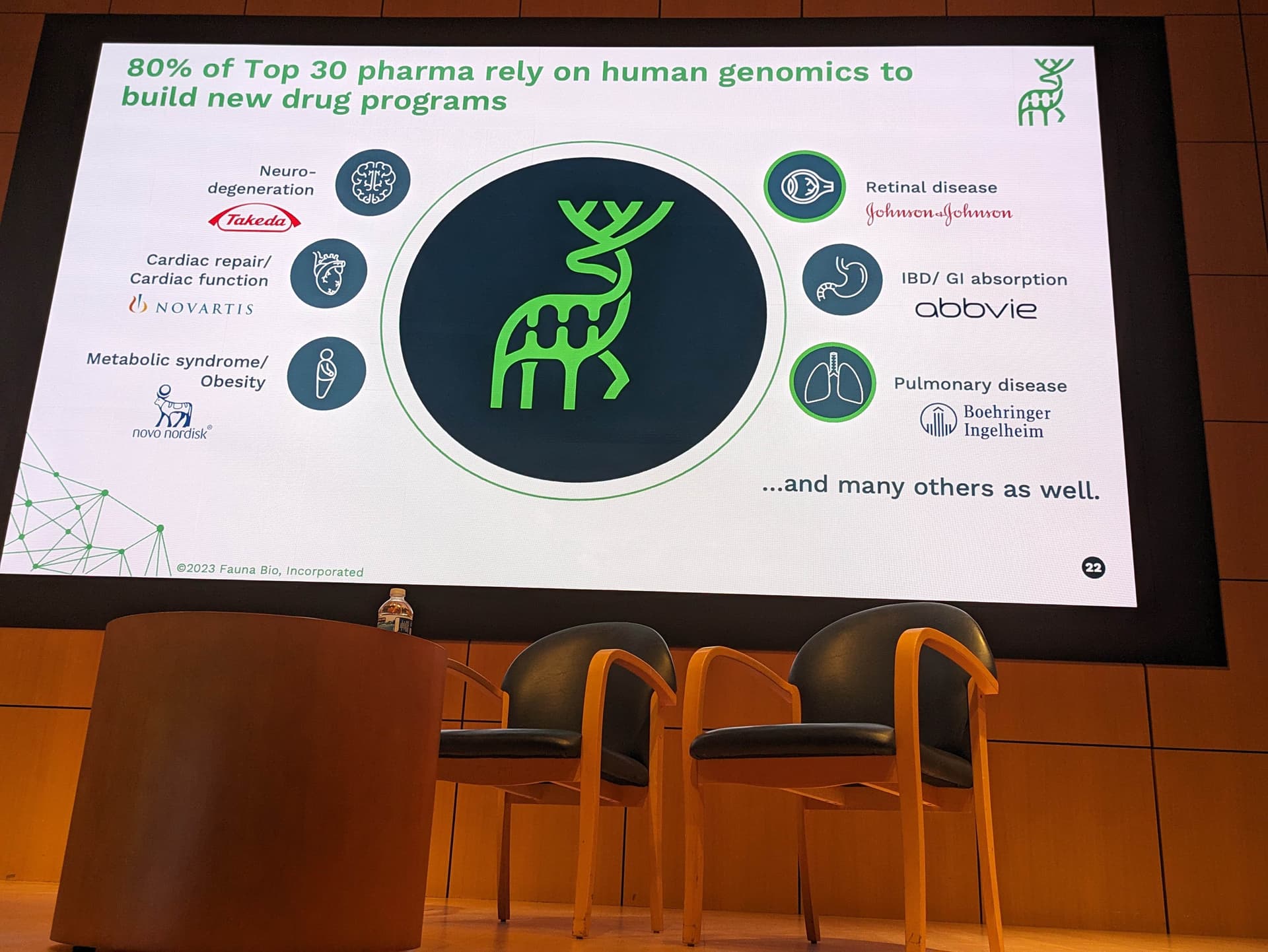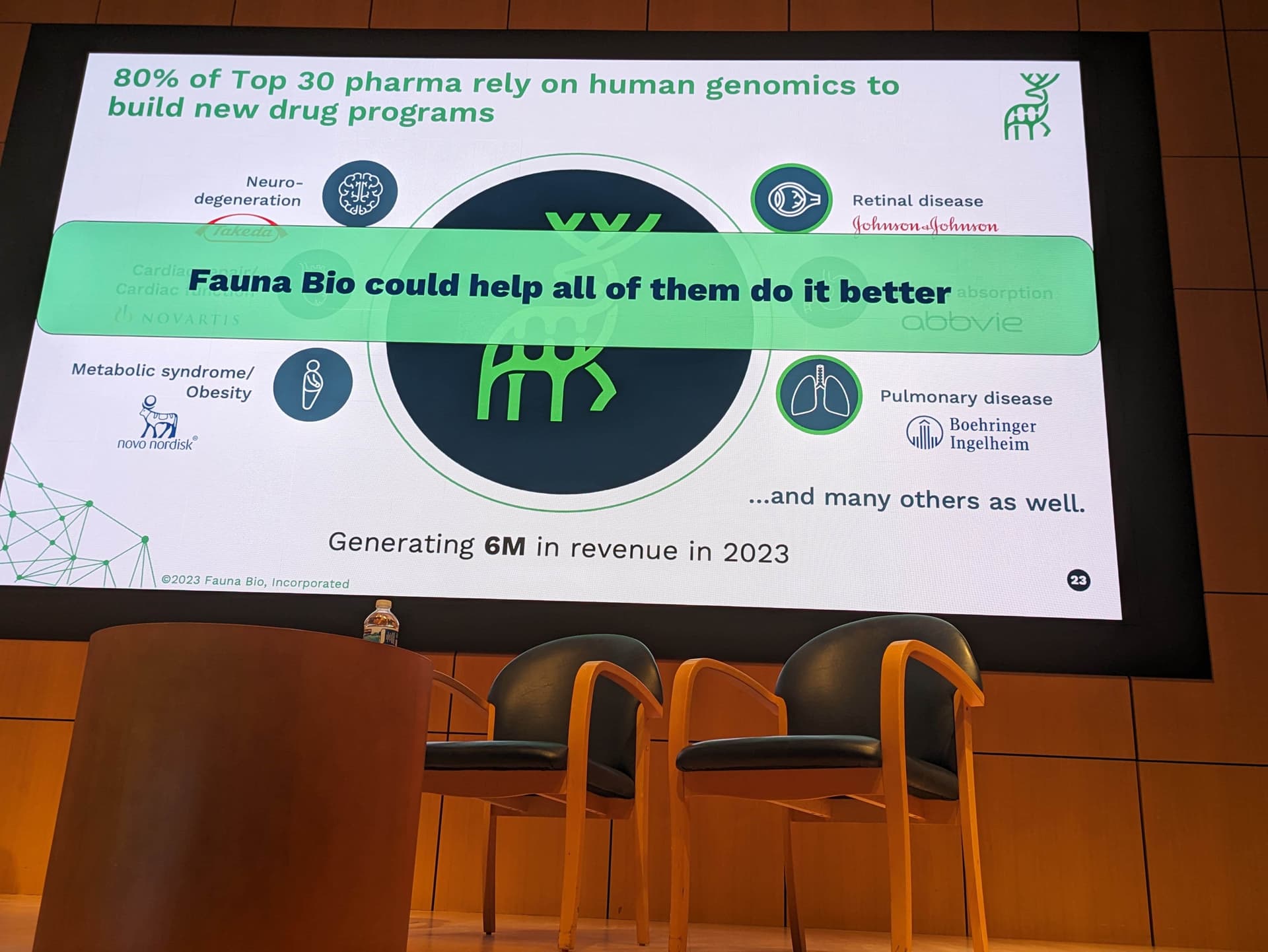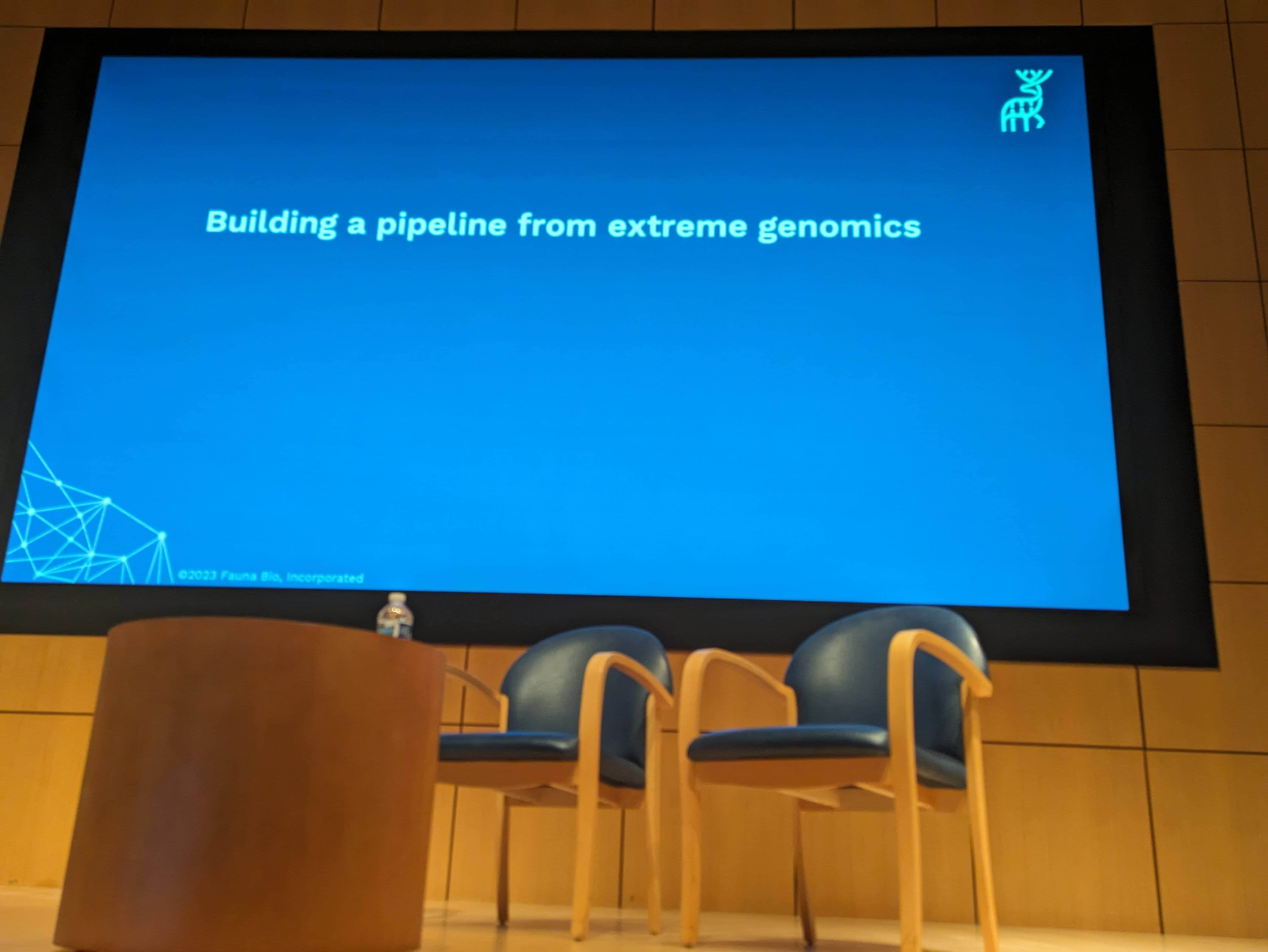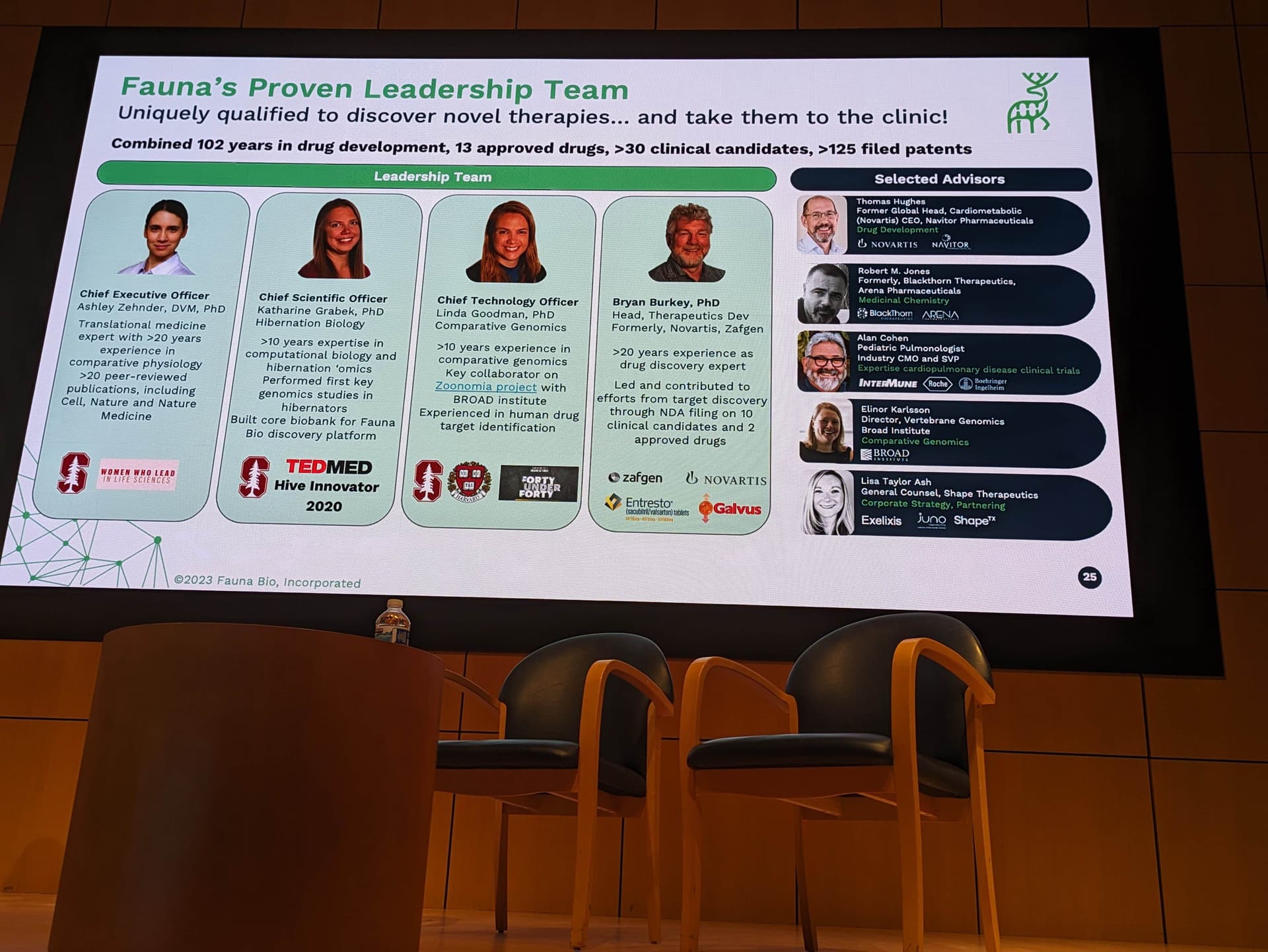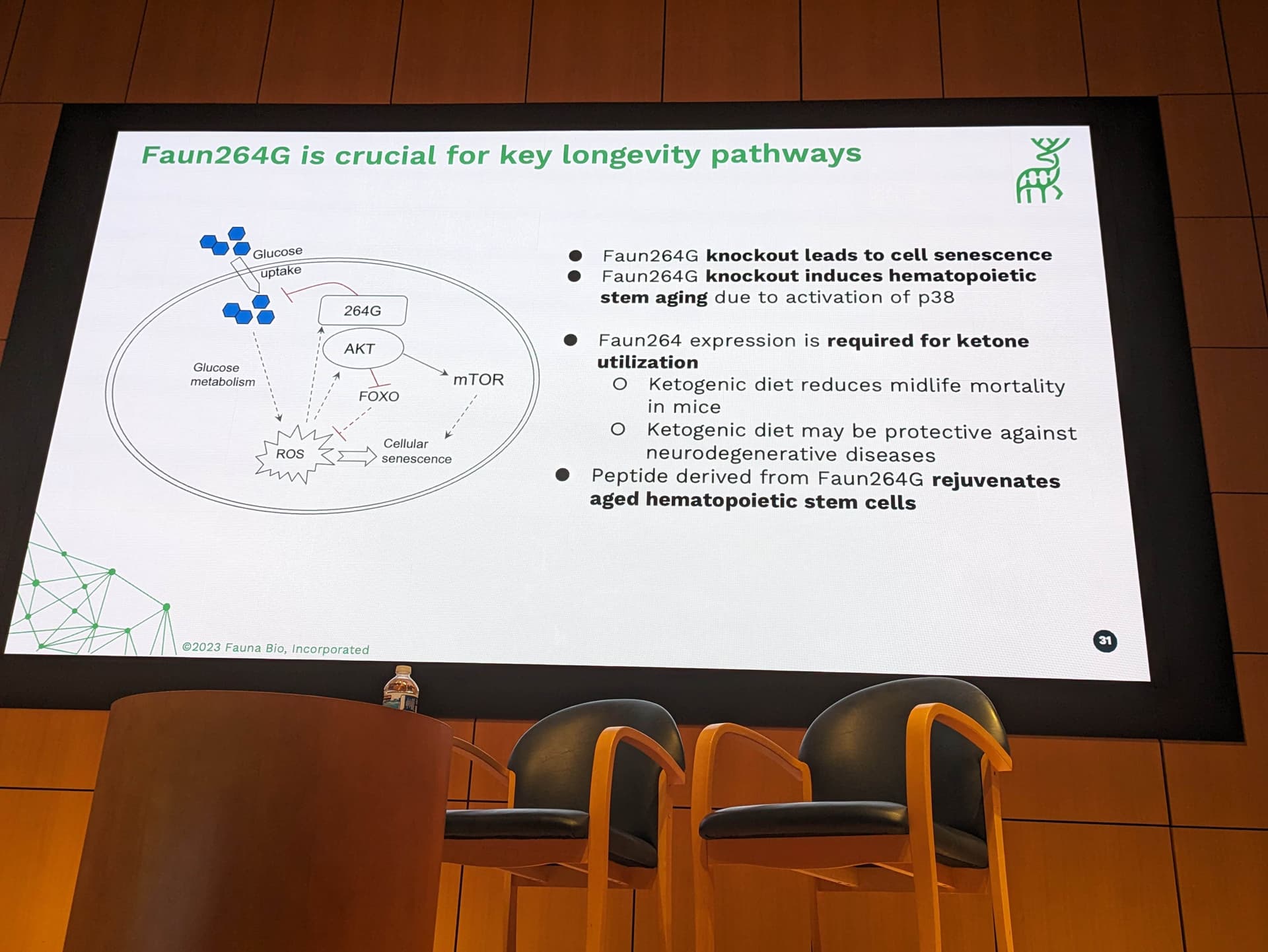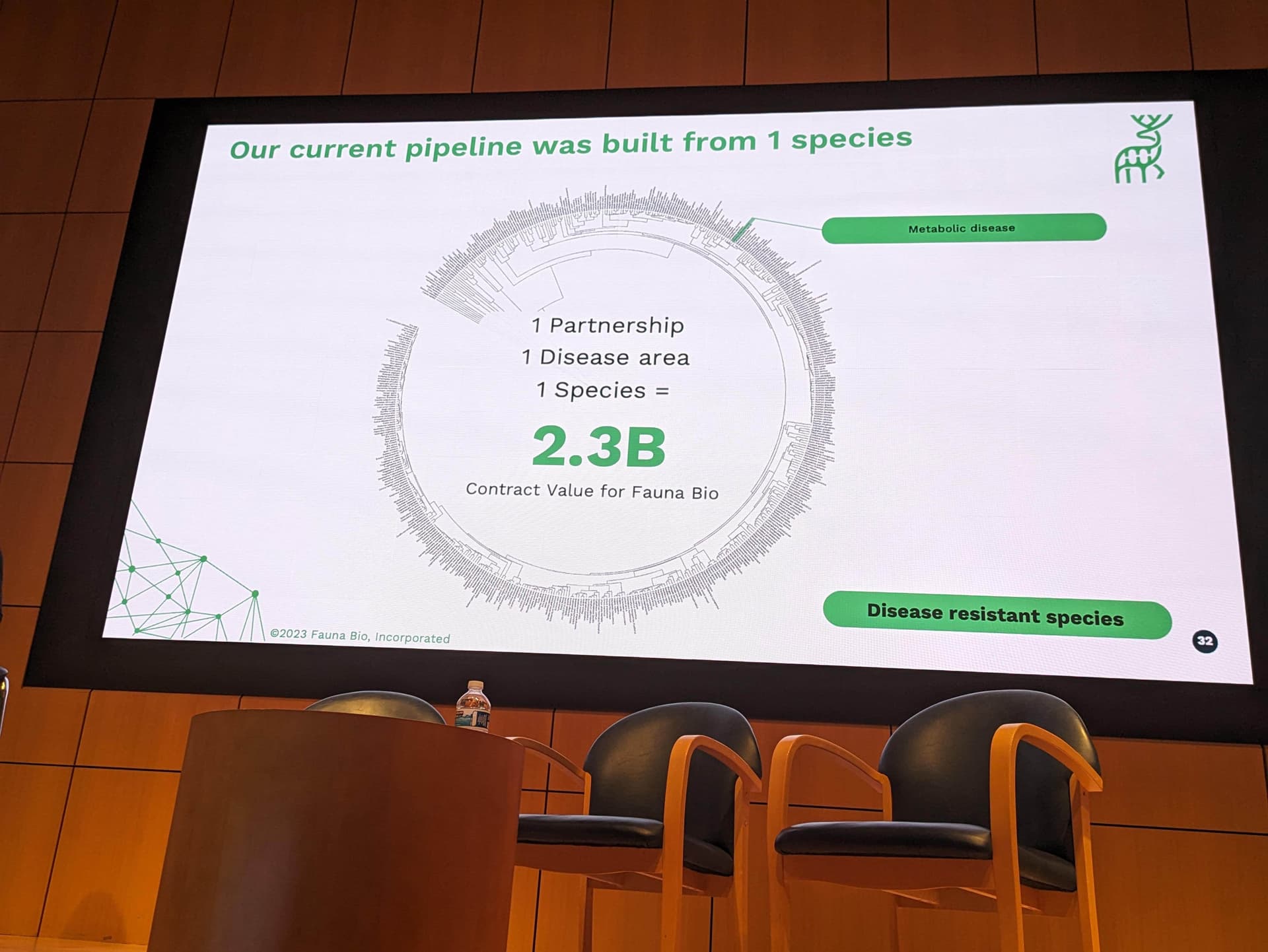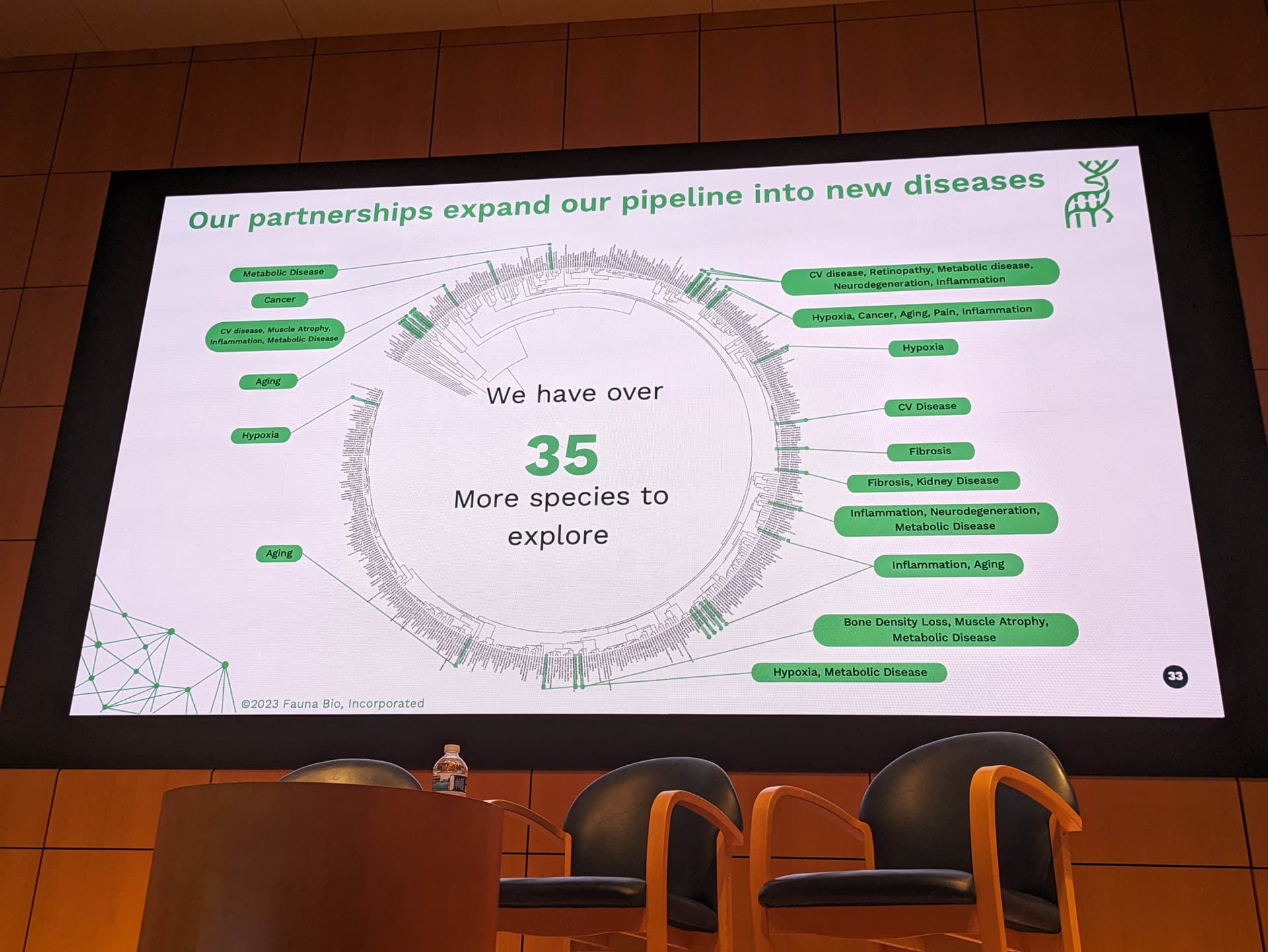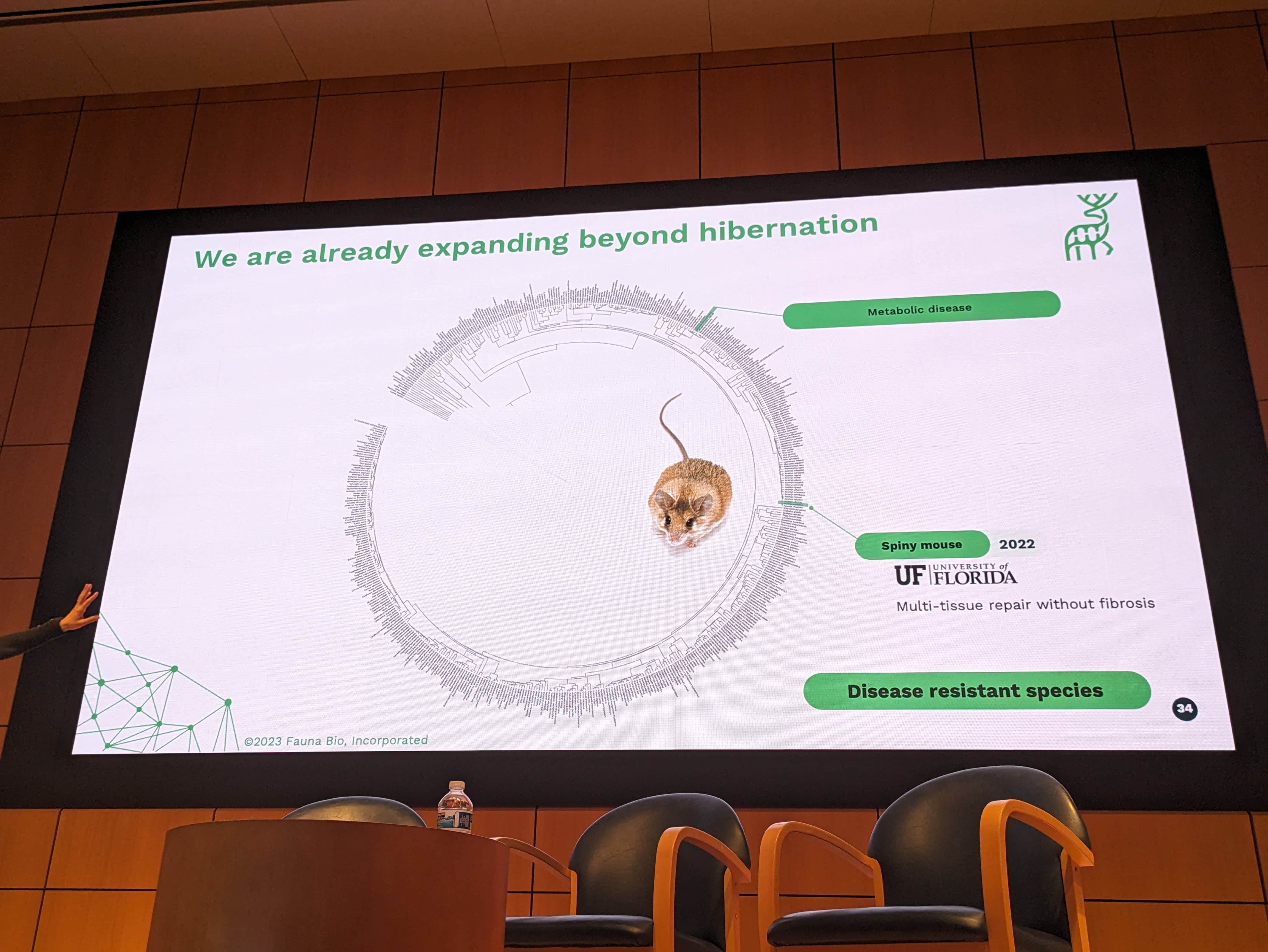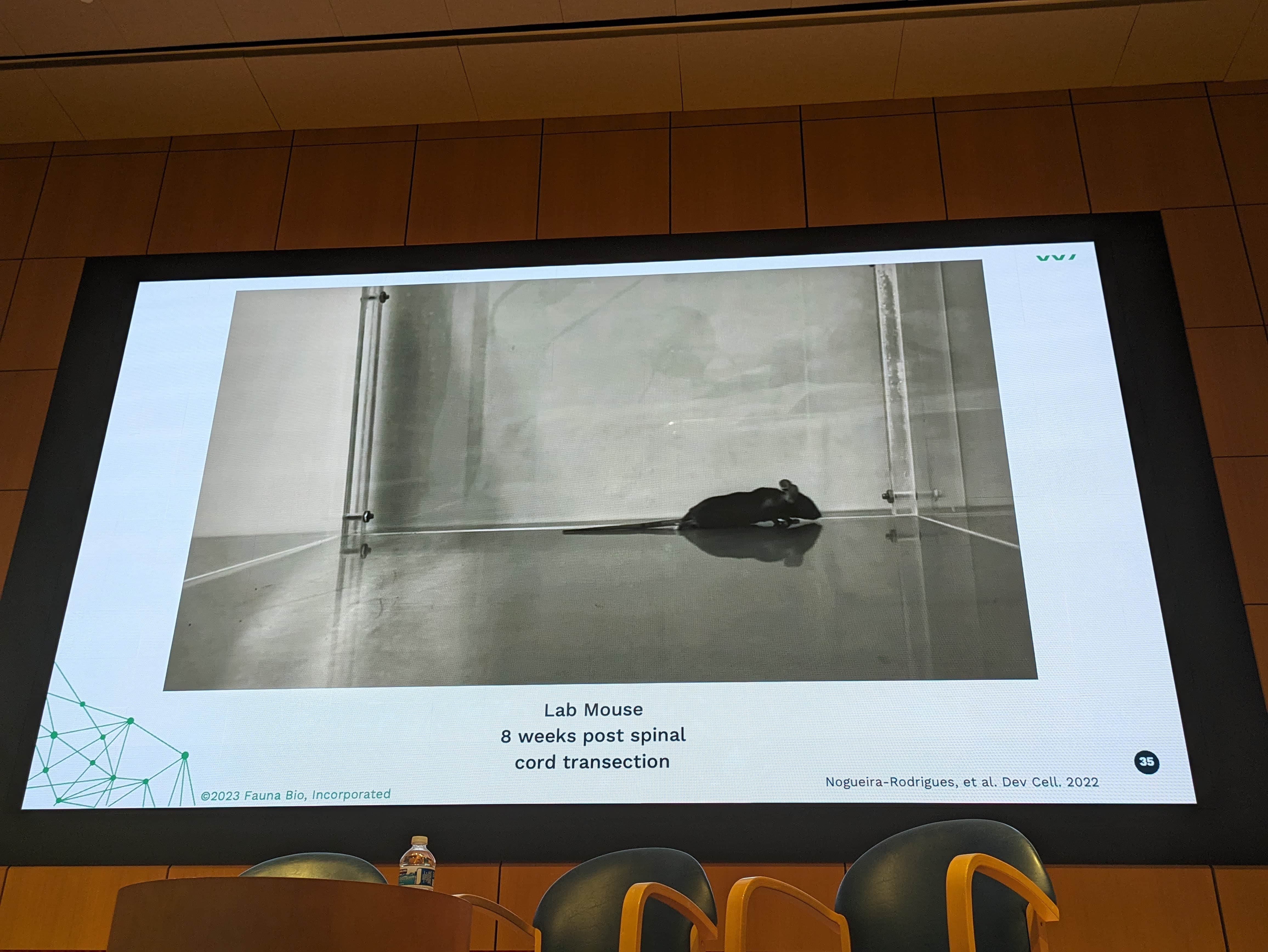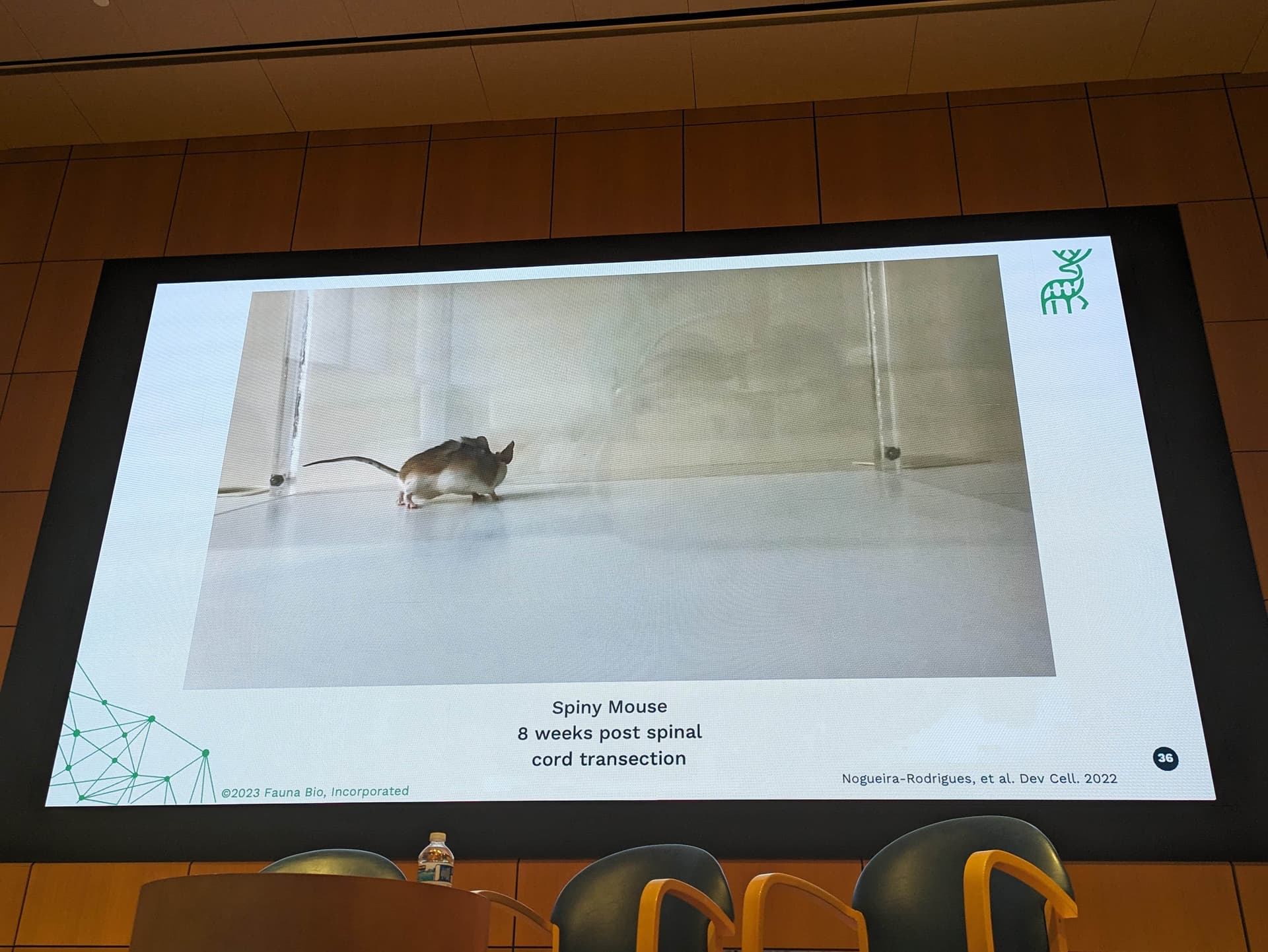WOW. This is pretty incredible.
Thanks for the great information and for bringing Longevity Summit to all us that couldn’t attend.
Vincere Biosciences
Vincere Biosciences is another mitochondria-oriented startup doing extremely interesting work. Spring Behrouz, PHD did an superb presentation on the company’s Mitophagy promoting drug they are working on. The concept here is that as you get older your body’s ability to trigger mitochondrial autophagy degrades, so you have these poorly working mitochondria lying around doing little, but using energy and slowing healing, contributing to disease, etc. Their candidate drug helps trigger autophagy in these damaged mitochondria (but not in the well-functioning mitochondria) and this allows the cells and organs to function better, heal better, and reduces disease risk and disease processes. It even helps (mice) live longer.
Are you looking to fund clinical trials for this?
Are you talking about Vincere BioSciences?
They are getting close to human clinical trials.
I forget what their funding status is. Most of the companies at the conference are startups and extra funding right now is good (because its a bit of a “nuclear winter” in biotech funding right now broadly… VCs have pulled back on their biotech investments this year. But I think the Longevity segment is better than most Biotech segments in this regard.
Fauna Bio
I love what this company is doing… so many fascinating “features” have evolved in other mammals that would be great in humans (in my opinion), or benefit people in disease conditions.
Ashley Zehnder covered their research in the 13-lined ground squirrel (that hibernates in some amazing ways) in her presentation last year, which I also loved. See here for that presentation: The Longevity Summit, News & Update - #10 by RapAdmin
In this year’s presentation she mentioned they are looking at the Spiny Mouse as a model organism they may be able to learn from. The Spiny mouse has an amazing ability to regrow and regenerate many parts of their body quickly and with no scaring (rare in the mammal world).
If you sever a Spiny mouses’ spinal cord, 6 weeks later its regrowing quite well and the animal is walking again. When you do this to a lab mouse… it is of course still paralyzed and unable to walk.
Ashley’s message was that we humans have these same genes in our body as part of evolution, we just don’t express them (turn them on). So if we could learn how to turn these genes on again, we could get similar benefits and regrowth abilities.
Autotomy and tissue regeneration
All studied species of spiny mice, Acomys kempi, A. percivali, A. cahirinus, A. dimidiatus, and A. russatus, are capable of autotomic release of skin upon being captured by a predator. To date, spiny mice are the only mammals known to do so.[8] They can completely regenerate the automatically released or otherwise damaged skin tissue – regrowing hair follicles, skin, sweat glands, fur and cartilage with little or no scarring. It is believed that the corresponding regeneration genes could also function in humans.[9]
In a research article published on May 16, 2017, in eLife, a team from the University of Kentucky described the role of macrophages in epimorphic regeneration.[10] The subtype of macrophages found in African spiny mice produces a different immune response than the subtype that elicits scarring.
One of the questions Ashley got after the presentation was what about looking more broadly at other organisms that have very interesting biological adaptions. Apparently there is the African Lung fish that can lie dormant in the dry mud for years (up to a decade?), and then be revived when the water returns after a drought. Another example this questioner cited was an insect that (I think he said) could be frozen solid, and later revived. Is Fauna bio looking at those types of things for additional opportunities for learning and potential use in humans. Ashley replied that moving beyond mammals is a heavier lift than they are interested in. These organisms cited - fish and insects, are much, much further away evolutionarily from humans, so it would be much harder to translate to humans for benefit. That timeframe required for that type of R&D is far beyond the scope of a startup company (and perhaps any company).
Related Reading:
Very provocative research, trying to tread the line of acceptable morality. I don’t believe that not being from an egg and sperm makes it more moral, but I do think how long it develops, particularly in the brain, would guide how I feel about it. I’d have additional concerns about how it is used and who owns it.
Still, I see the attraction of a stem cell or tissue bank made out of your own stem cells. I’d use it if I felt comfortable with the process.
Good points. There are actually many discussions about these issues in the longevity science field right now.
Please give me your feedback on the following thought experiment. If the embryoid had a special gene knockout that prevented the growth of the brain above the brain stem (I suspect you need some basic brain function to keep the body operating), would you have concerns about using organs tissues or other products from the stembrio for regenerative medicine?
Let me take the thought experiment even further. How would you feel about using the entire body grown from a stembrio that comes from your adult stem cells for a possible head transplant to this new body. You can imagine that technology such as is being looked at by fauna biotechnology that allows clean regrowth of spinal cords could solve the problem of attaching a head to a new spinal column and spinal cord. How would you look at that scenario?
These are the type of conversations I’ve had with some of the biologists who are working and following this area closely.
I would be OK with it as long as I didn’t think about it too long. ![]()
RapAdmin. You wrote:
“The hope that by taking Dasatinib and Fisetin to clear out your senolytic cells every year or two as you get older, really has been supplanted by the belief that there will likely be uniquely targeted senolytics developed for different tissue and cell types, and used in different disease types.”
Is this statement based on your discussion with the presenter and is it is opinion or based on his research? Not trying to be snotty, just seeking clarification. Thanks
How would you feel about using the entire body grown from a stembrio that comes from your adult stem cells for a possible head transplant to this new body.
To be honest, I’d do it right now. Even though I’m not quite a senior, and in generally good health, the longevity and health advantages of, say, a 25 year old (equivalent) body would be awesome. However, I’d insist that the grown body never had a brain, although there are gray areas like the brain stem, etc. And I’d want complete legal ownership throughout the growth process.
Good questions!
Yes. I was just curious how far they are along. There seem to be so many biotech companies with great ideas that are all at preclinical stage. It seems it’s a huge bottleneck. I think the funding issue isn’t just confined to biotech there’s been a major contraction in other industries as well. But things seem to be beginning to move again slowly. I recently listened to an interview with the CEO of Oneskin and they would like to do human trials on a pill but it’s too expensive.
do you have a sense from the conference, from informal conversations, that how many of those attendees are on rapamycin and other longevity combinations?
It does raise some interesting thoughts. Though being given a body that has been grown in a vat for twenty five years doesn’t sound all that appealing.
Funny… I had not thought about how long it might take to grow full organs / a body. You bring up a good point, even if was for organs… I wonder how long it would take to grow. More than a few years doesn’t seem to be viable (from a business perspective). But obviously, lots of science needs to be worked out whatever the case.
I can’t see anyone waiting 15 or 20 years for a new “body”, but I guess companies like scotch and whisky companies do bottle products and put them away for 15 or 20 years until they have “aged” properly and are ready to sell, so perhaps this model could also work in biology (its just never been done as of yet).
Funny you bring this up. I sent a text to a friend today saying how well the conference went, and commenting how “Where else in the world could I sit down at a table for lunch with 9 other random people and 80% of them are taking rapamycin?”. I’m exaggerating about the 80% number a bit, but not by too much. I met up with a forum member who also attended and we sat down for lunch and it turned out 50% of the people at the table was taking rapamycin. Even a young girl who looked like a teenager, but who was actually a fairly newly minted PHD in Eric Verdin’s lab and who was probably late 20s said she and her boyfriend were both taking rapamycin too.
Lots of the researchers at the Buck are taking rapamycin. Any medical doctors there at the conference I spoke with were all taking rapamycin. I don’t have any way to gauge the actual percent, but I suspect it was likely around 30% of the group, and the only reason it might not be higher is because many of the people starting the longevity companies seem to be in their 30s, which is a little on the younger side to start rapamycin.
Other people were very enthusiastic about the latest SGLT2 inhibitor review article that is leading them towards wanting to take it for longevity.
I have no idea on the supplement side of things. My focus here was mostly on drugs and therapies at this conference.
Good question. Its mostly more just my impression and interpretation of what Marco Quarta was saying in his presentation about the new world of “Senolytics 2.0” and the implications of what he was saying. James Kirkland was not there, and nobody at the conference was discussing dasatinib and fisetin. But that is what seems to be the implication of all this new research being reported on. But - yes, don’t take my word as gospel. If I was planning to take dasatinib / fisetin, etc. I’d first talk to some of these researchers to see what the current thinking is around these interventions. It seems like the pendulum is swinging in a very different direction now.
I have been using it for the last 2 months in combination with Rapamycin cream and Tretinoin. Very hard to comment on the efficacy. The science base is interesting, but the aggressive marketing approach makes you wonder. It is obviously driven by commercial objectives.
Yes - its always hard to know where the science leaves off, and the marketing begins. Ultimately you have to make the call to continue buying or not based on your own results.
So what dosing of Rapamycin was trending? 6-9 mg weekly?
